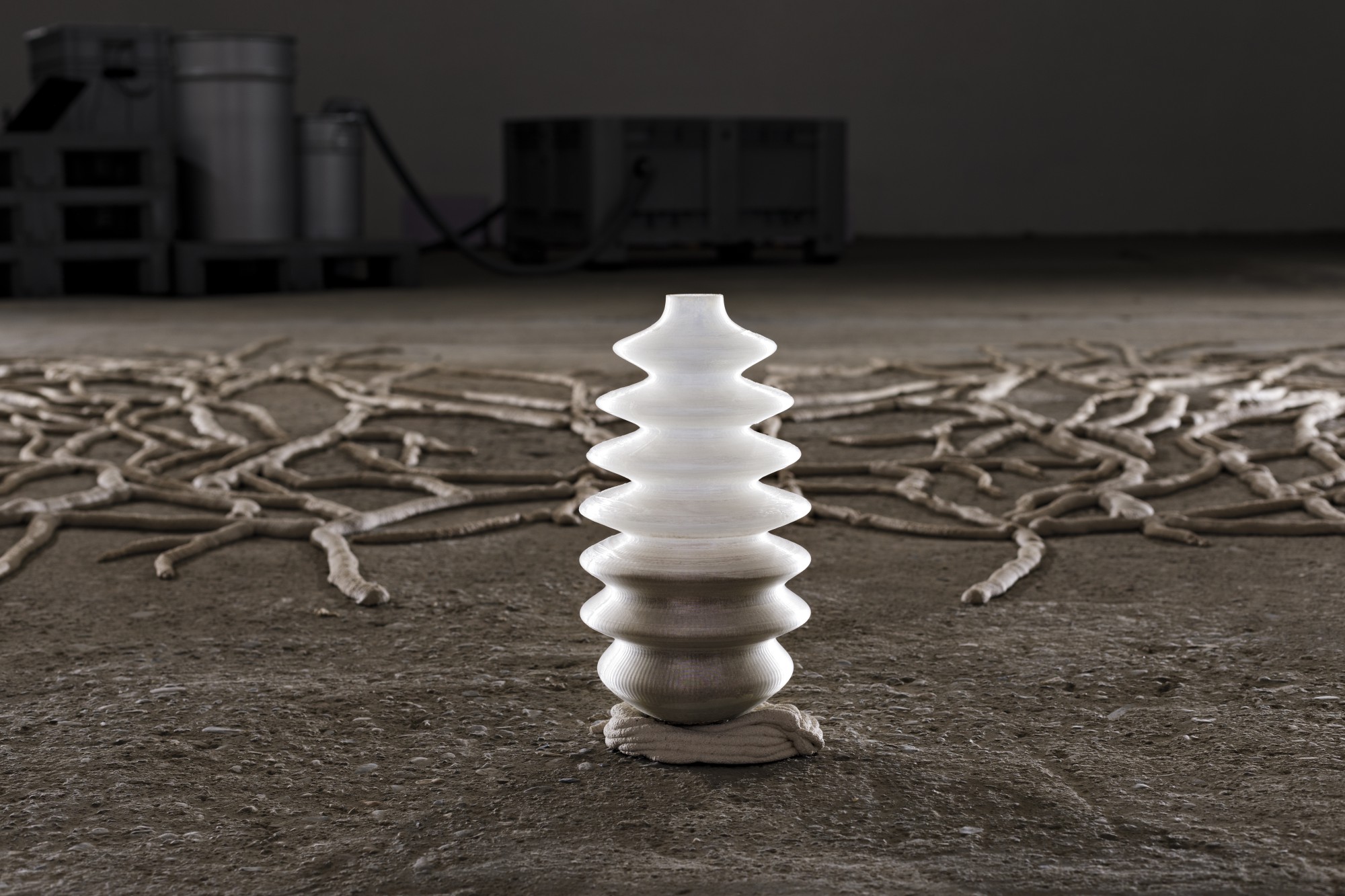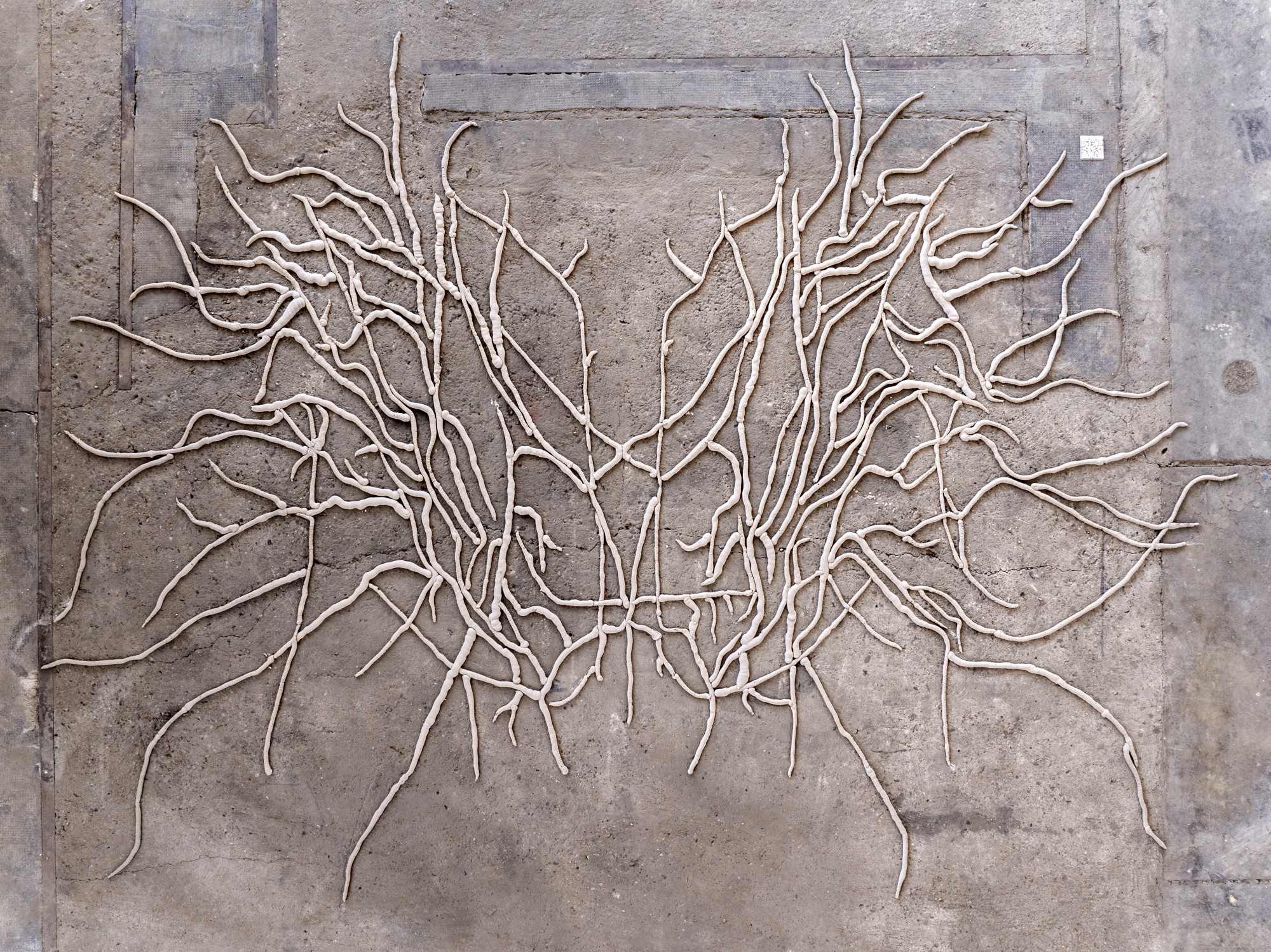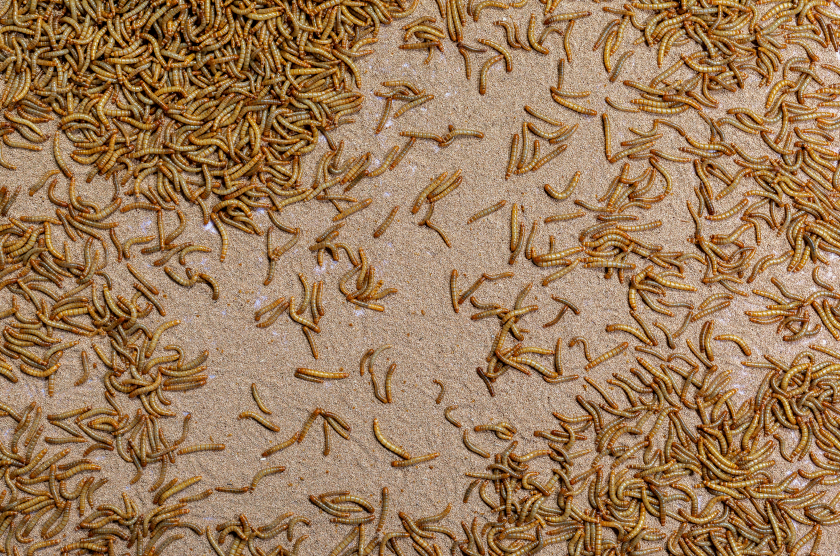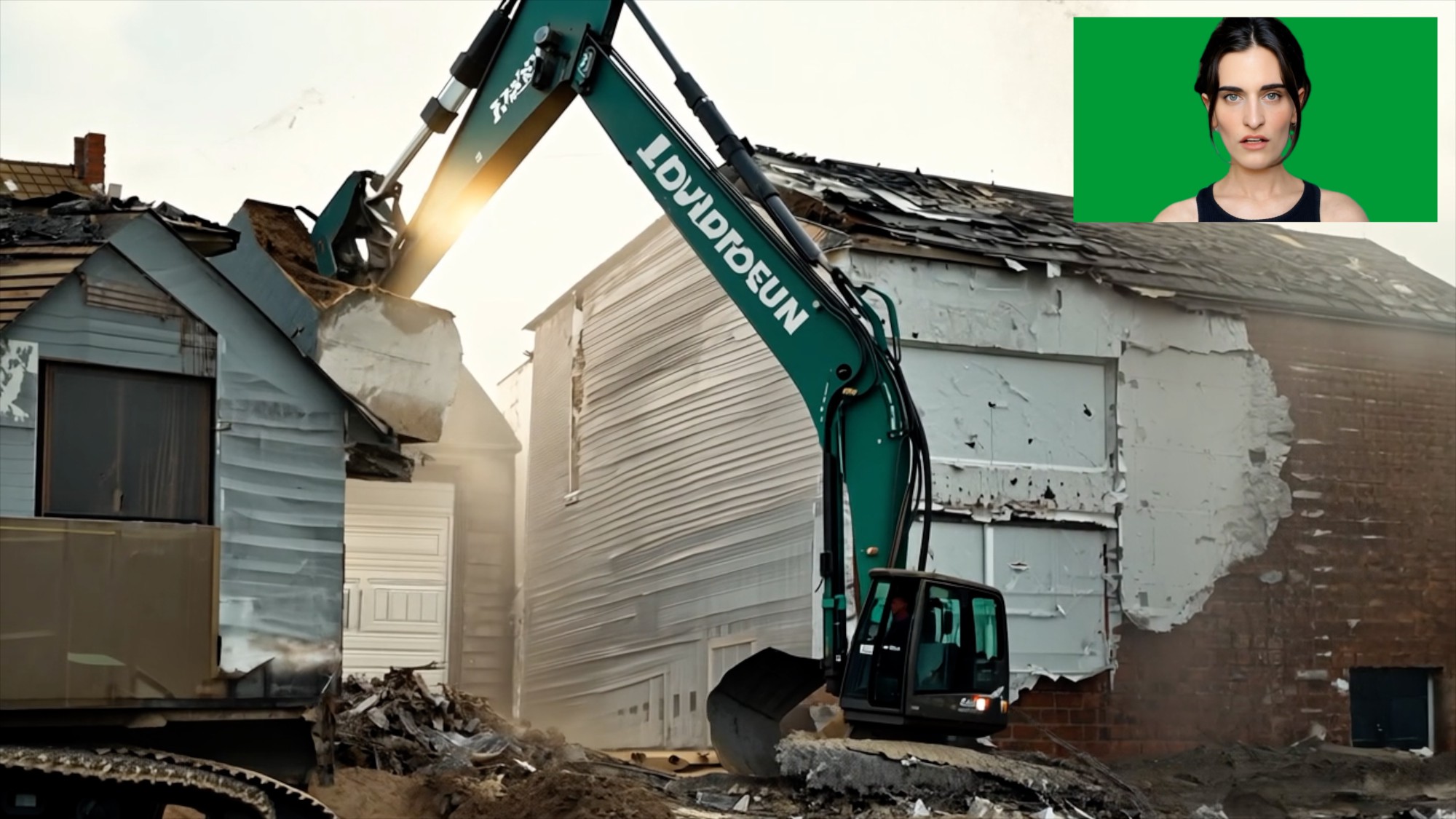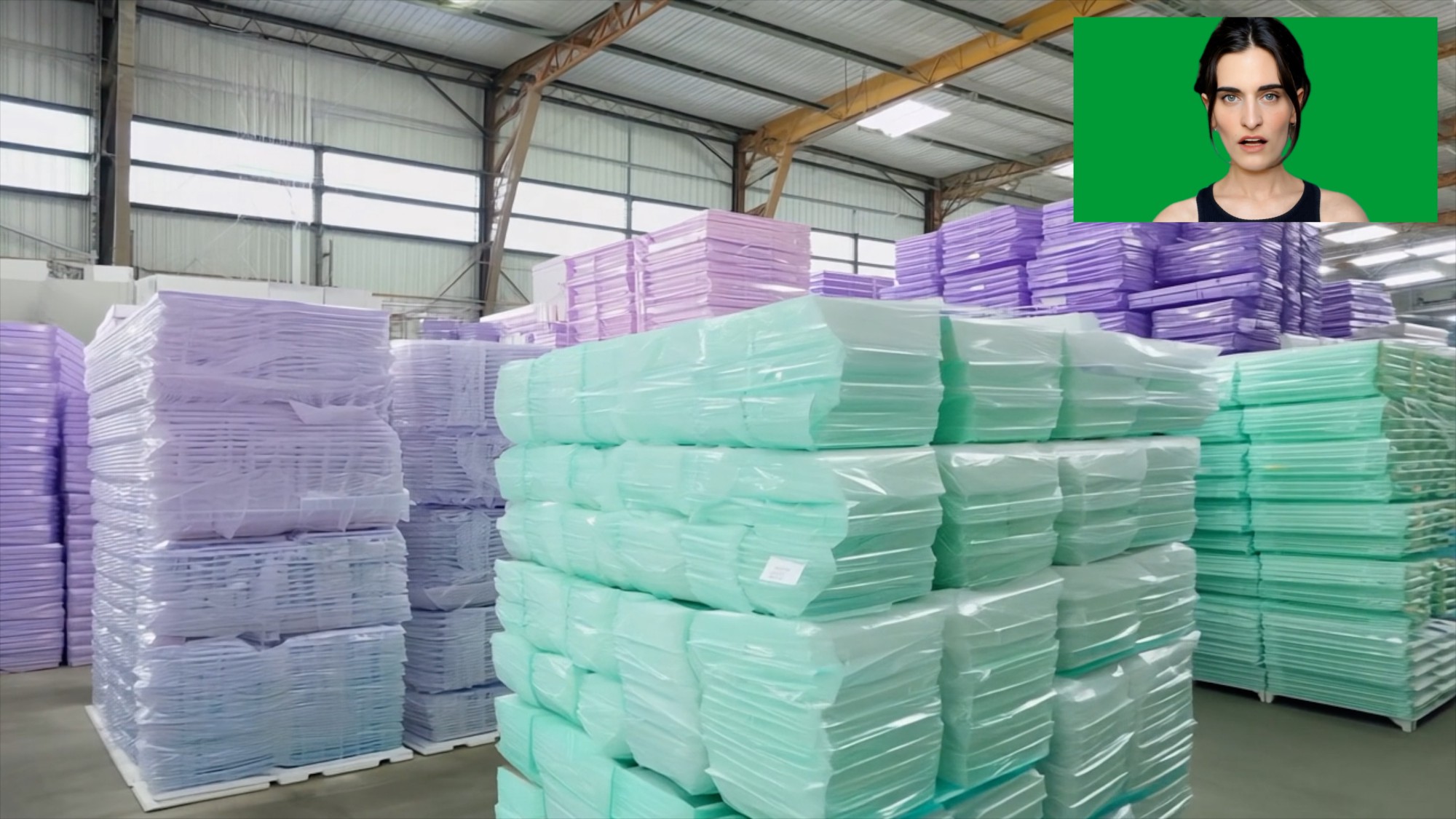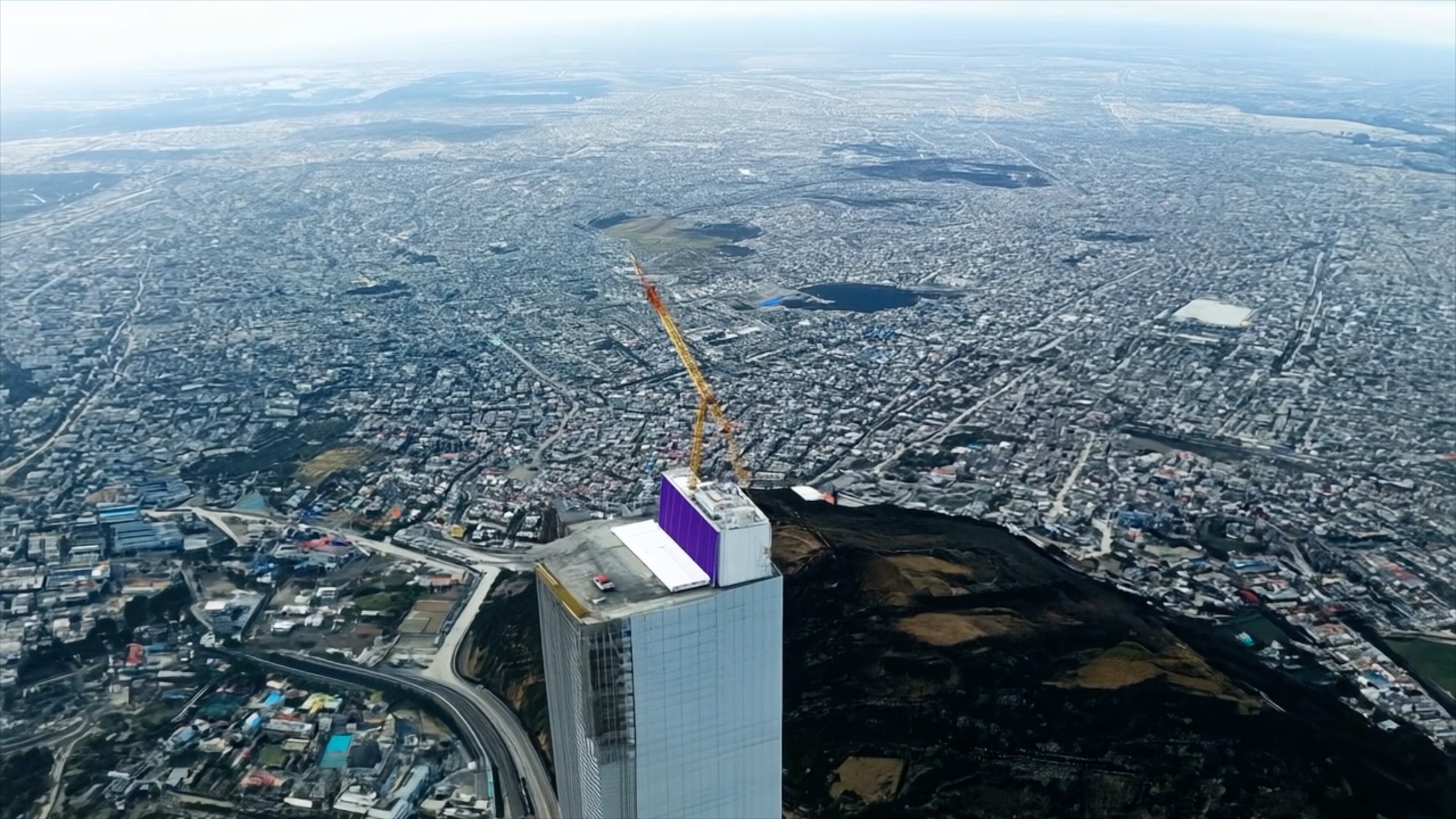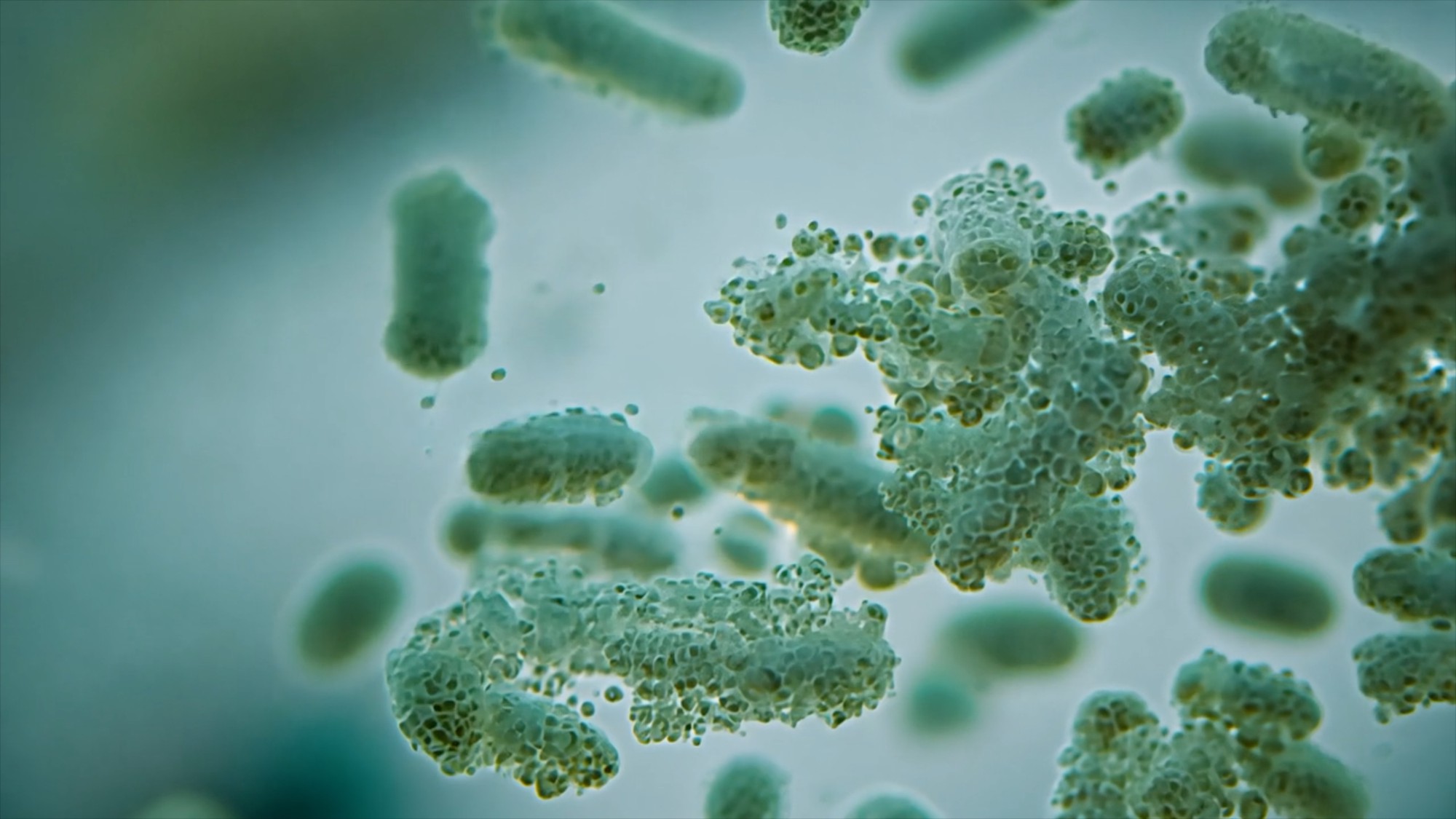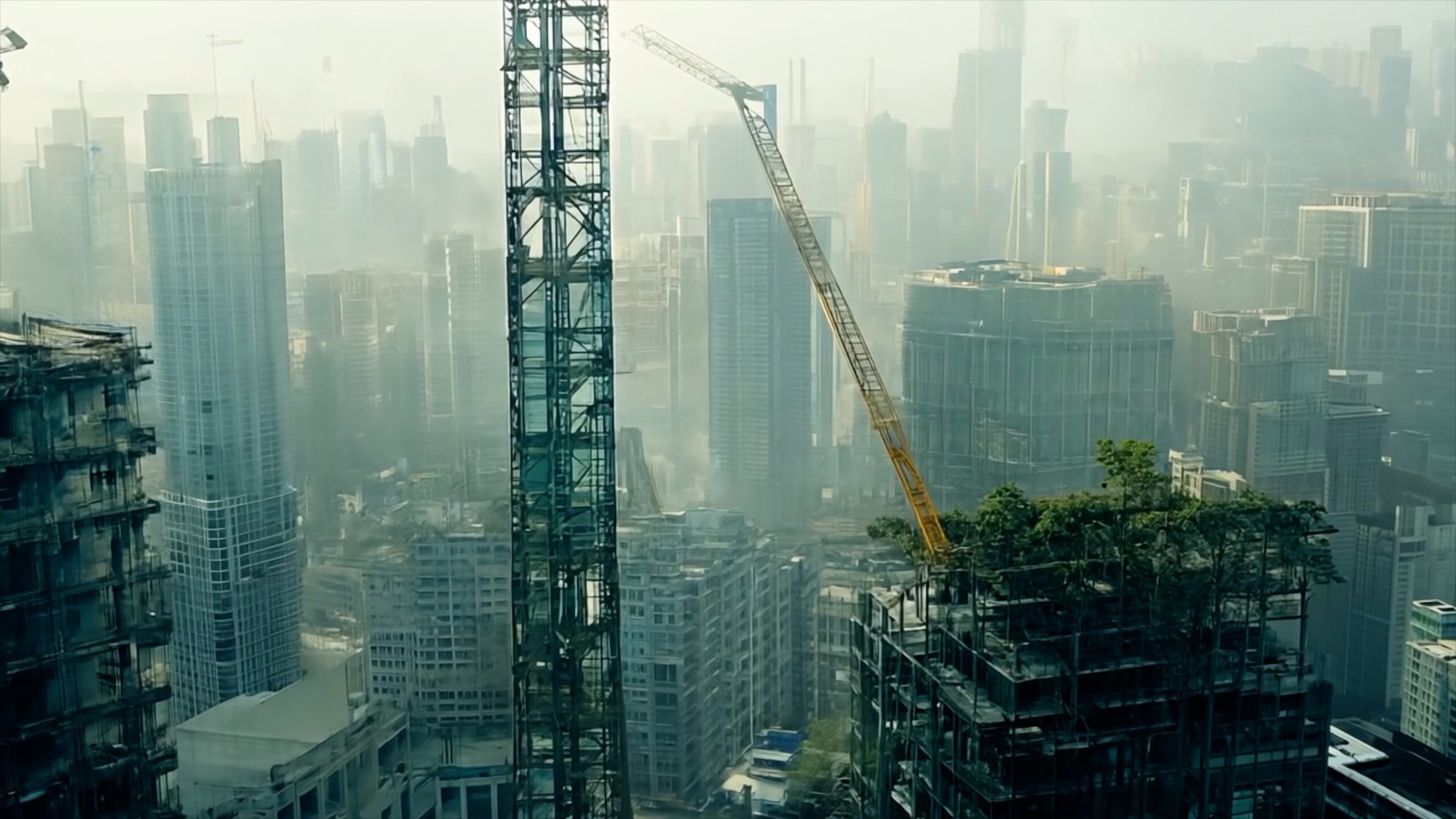Hybris
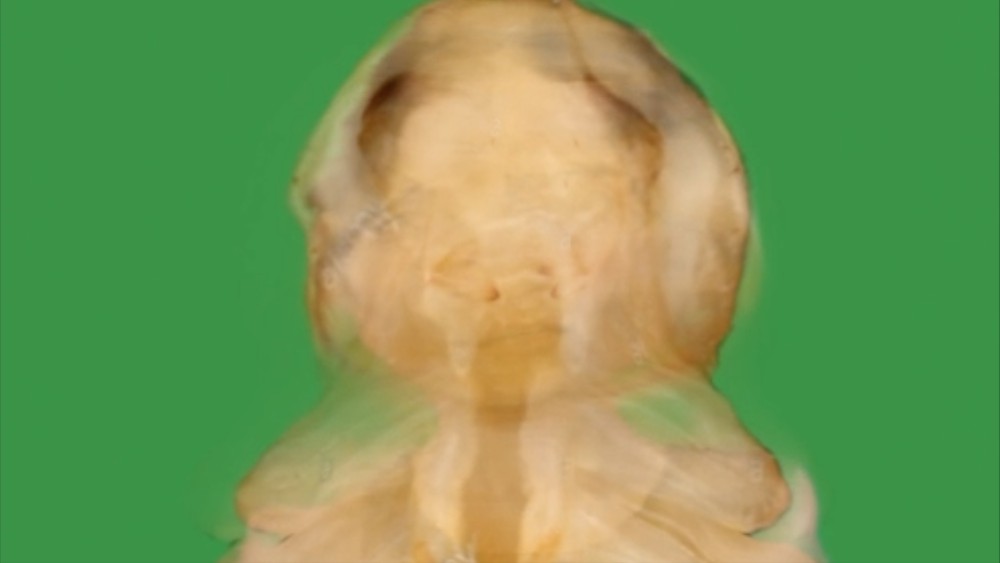
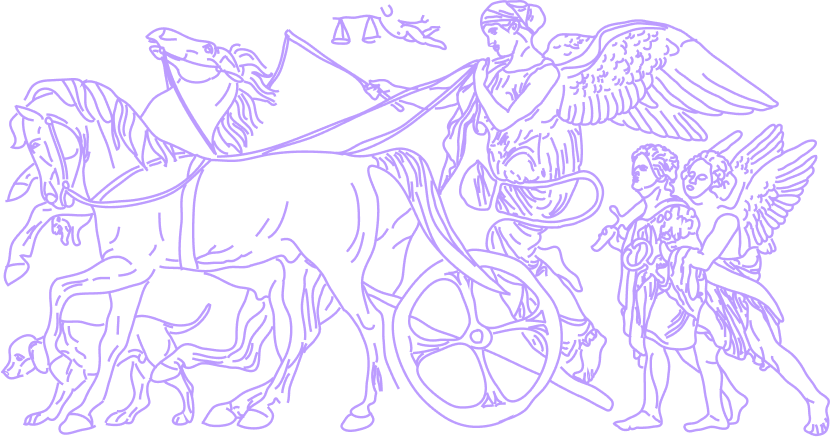

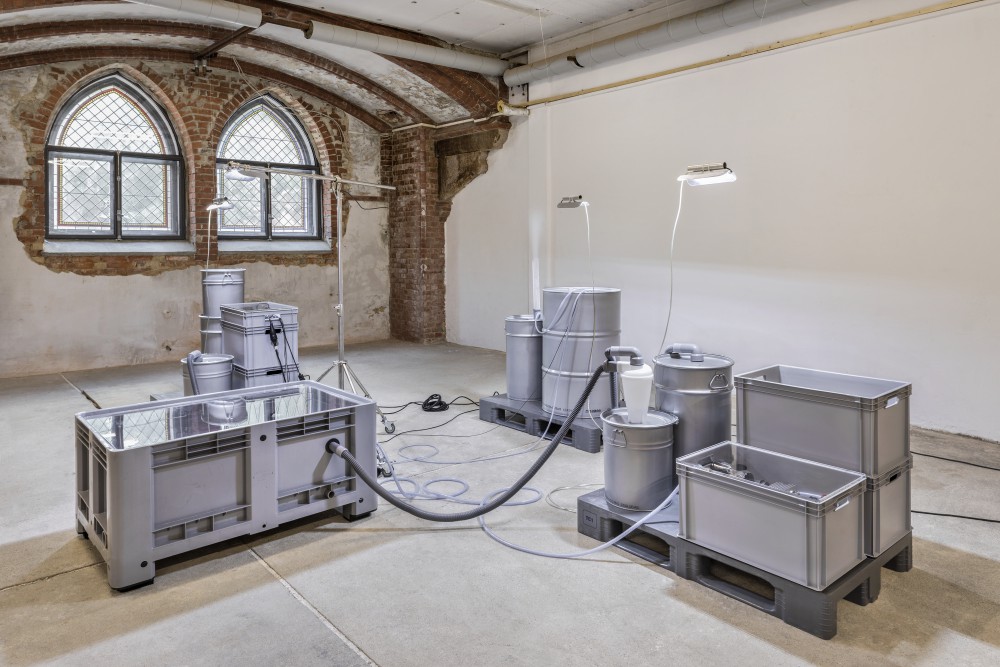


HYBRIS is an art-based research initiative that presents a novel method for repurposing waste into building materials. Since 2019, Yana Zschiedrich has been exploring this concept by using mealworms as sculptural support and transforming expanded polystyrene into biodegradable materials that can replace sand in new and sustainable architectural applications.
Within this research initiative, Zschiedrich also engages with a comprehensive thematic world including anthropocentrism, revenge, and ecofeminism. Her work draws inspiration from renowned scientists, including Donna Haraway.
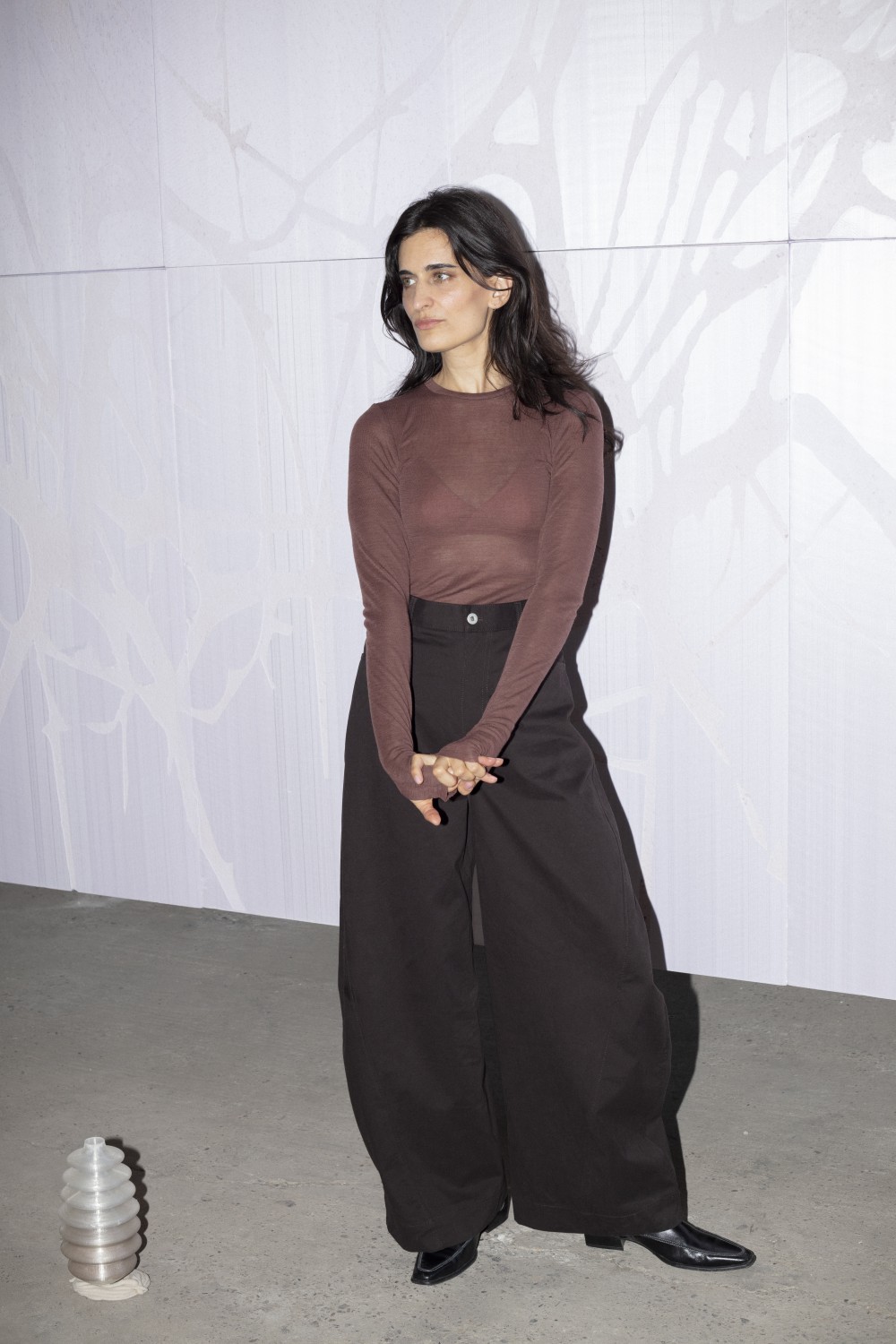
Yana Zschiedrich, born in 1987 in Ludwigshafen am Rhein, lives and works in Leipzig. As a former master student of Prof. Joachim Blank, she focuses her artistic practice on the creative interplay between art, architecture, and ecological responsibility.
Her research initiative Hybris explores the dynamic relationship between humans, nature, and the built environment—not as a source of conflict, but as a space for new possibilities and shared futures.
With innovative approaches such as Geobris, a sustainable building material of her own design, she rethinks the connection between conceptual thinking and material innovation.
Zschiedrich’s works envision alternative ways of living and building—art and architecture as tools to inspire, adapt, and co-create resilient, ecologically aligned futures.
yana.zschiedrich@gmail.com
@yanazschiedrich
06/2025
KunstvereinGRAZ, D-Regensburg, Duo-Show
05/2025
Sayner Hütte, D-Bendorf, INTO. A festival of artistic positions on the theme of immersion, group show
02/2025
GRASSI Museum for Applied Arts Leipzig, supporting program for the special exhibition "FUTURES: Material and Design of Tomorrow"
09/2024
Techne Sphere, GER-Leipzig, Why does the sun go on shining? Why do birds go on singing? Because they know it isn’t the end of the world, Meisterschüler-Festival
since 05/2024
Futurium, GER-Berlin, Theme Year: Treasures of the Future, Permanent Exhibition
07/2023
Deutsches Museum, GER-München, Festival der Zukunft, group show
05/2023
HilbertRaum, GER-Berlin, Traffic Control, group show
12/2022
Studio12 Spinnerei, GER-Leipzig, What We All Want, group show
04/2021–05/2021
Gr_und Galerie, GER-Berlin, Non.Depleted, group show
09/2020
Westpol A.I.R.space, GER-Leipzig, HYBRIS, solo show
11/2019–01/2020
a&o Kunsthalle, GER-Leipzig, We All Should Be Lichens, group show
05/2019–06/2019
TAF The Art Foundation, GRC-Athen, HUMAN PARTICLES OF THE LIVING SUN, group show
06/2016
Contemporary Art Ruhr, GER-Essen, Archive of no tomorrow, group show
COLLECTION
since 05/2024
FUTURIUM gGmbH, GER-Berlin
06/2025
Funken Academie, Chemnitz, Germany, Funken Night, Lecture-Performance
02/2025
GRASSI Museum of Applied Arts, Leipzig, Germany, Program for the special exhibition “FUTURES: Materials and Design of Tomorrow,” Artist Talk
11/2024
BBK Berlin Education Center, Berlin, Germany, Workshop on Climate and Sustainability, Keynote Speaker
05/2024
Association of Youth Art Schools and Cultural Education Centers (LJKE Bavaria), Nuremberg, Germany, Creative Lab Workshop "plan_los," Inspirator
10/2023
Burg Giebichenstein University of Art and Design Halle, Halle (Saale), Germany, Semester project insectmatter, Lecturer
07/2023
Future Festival at the German Museum, Munich, Germany, “Art and Innovation,” Speaker
09/2018
State Association for Cultural Children and Youth Education (LKJ) Saxony e. V., Leipzig, Germany, Workshop for prospective students culminating in an exhibition at the Academy of Visual Arts, Workshop Leader
06/2025
Nomination "S+T+Arts Prize 2025", European Commission / Ars Electronica
01/2025–06/2025
Scholarship of the Cultural Foundation of the Free State of Saxony
11/2024
Winner of the "VNGart Prize 2024", Art Prize of the Friends of the Academy of Visual Arts and the VNG Foundation.
07/2024–12/2024
Project Grant, artist residency Schloss Balmoral
09/2024
Winner of the "WIRKMÄCHTIG Culture4Climate Prize 2024" in the Individual category, funded by the Federal Ministry for Economic Affairs and Climate Action, initiated by the Kulturpolitische Gesellschaft e.V., Ökoinstitut e.V., and the Network for Sustainability in Art and Culture.
10/2021–06/2024
State Graduate Scholarship, Saxon State Scholarship, Saxon State Ministry for Science, Culture, and Tourism
2022
Winner of the "Artist in Lab 2022" competition by Fraunhofer WKD
11/2020 & 12/2020
Work grant from the Cultural Foundation of the Free State of Saxony as part of the "Denkzeit" program
05/2014–05/2015
AIT Scholarship 2014 from the Sto Foundation
2024
The Insect Project: published by Mareike Gast. Published under the framework of Burg Giebichenstein University of Art and Design Halle, Halle (Saale).
2023
HYBRIS23, GER-Leipzig, published by Yana Zschiedrich & Fraunhofer WKD
2023
Jahresmagazin No.11, GER-Dresden, published by Landesverband Bildende Kunst Sachsen e.V
2021
HYBRIS20, GER-Leipzig, published by Yana Zschiedrich
2020
Human Particles of the Living Sun, GER-Leipzig, HGB Leipzig, published by Joachim Blank
2015
AIT Büro und Verwaltung · Office Buildings
2014
AIT Wohnen · Living
HYBRIS
Yana Zschiedrich
Distaff Studio in collaboration with Jonas Holfeld.
Yana Zschiedrich
Julius C. Schreiner
Marco Dirr
We take the protection of your personal data very seriously. Since our website does not collect or share user data and does not use cookies, you can use our website without concerns about disclosing personal information. Although we do not collect personal data, we would like to provide some basic information:
Server Logs: Our website servers automatically store certain information that your browser sends when you visit our website. This information is of a general nature and includes IP addresses, browser type, operating system, referral URL, and pages visited. These data are used solely for statistical purposes and to improve our website but are not linked to individual users.
External Links: Our website may contain links to external websites. Please note that we are not responsible for the privacy practices of these external websites. We recommend checking the privacy policies of these websites when using their services. While we do not collect personal data, we want to emphasize that your privacy is of the utmost importance to us, and we take all reasonable measures to ensure that your information is protected. If you have any questions or concerns about our privacy practices, please contact us at [Your Contact Information]. Please note that this privacy notice may be updated occasionally. The latest version will always be available on this page. Last updated on [Update Date].
Installation

Hyb.Instal.2024.01
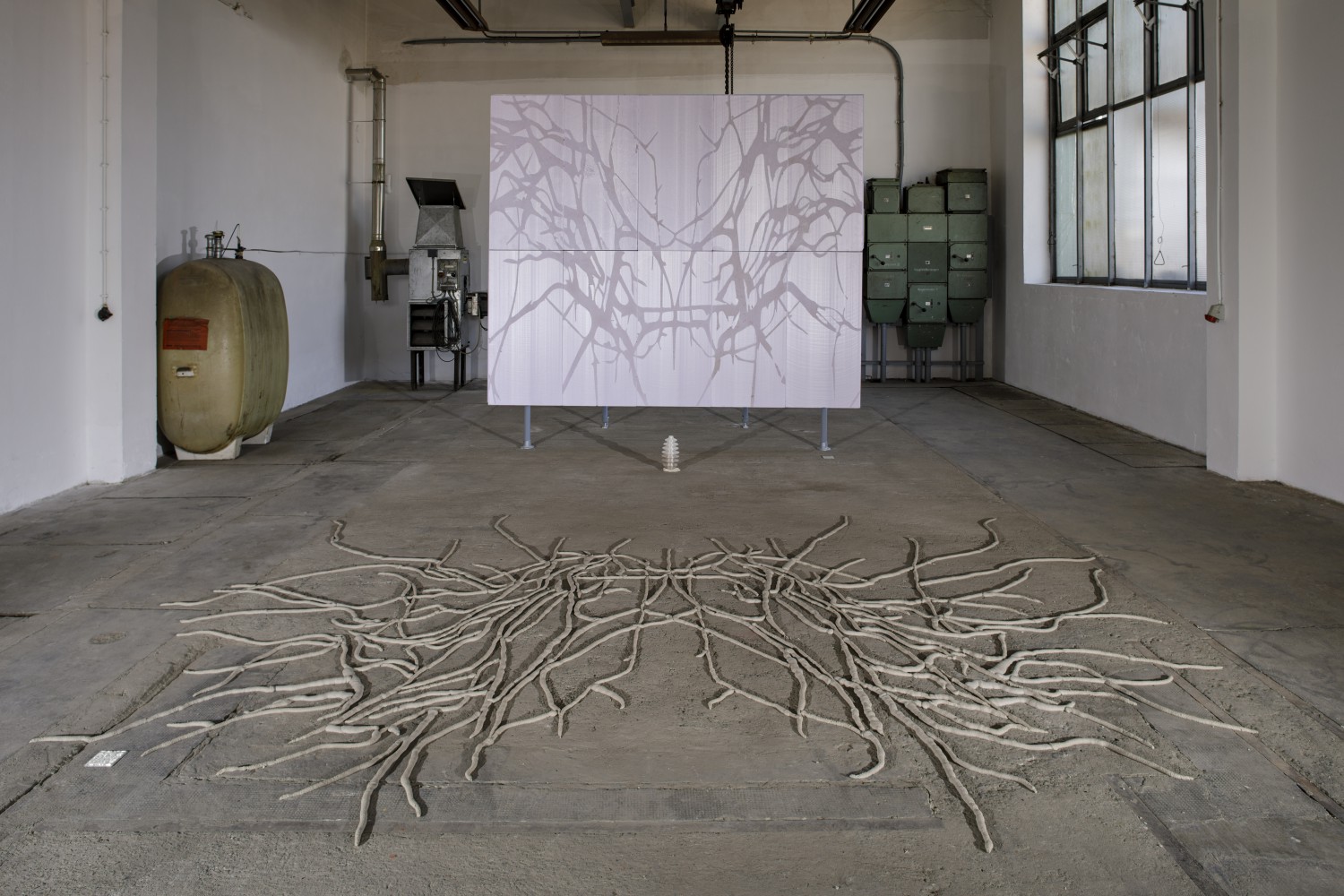
Why does the sun go on shining?
Why do birds go on singing?
Because they know it isn’t
the end of the world.

300 x 300 cm
EPS insulation panels, steel tube
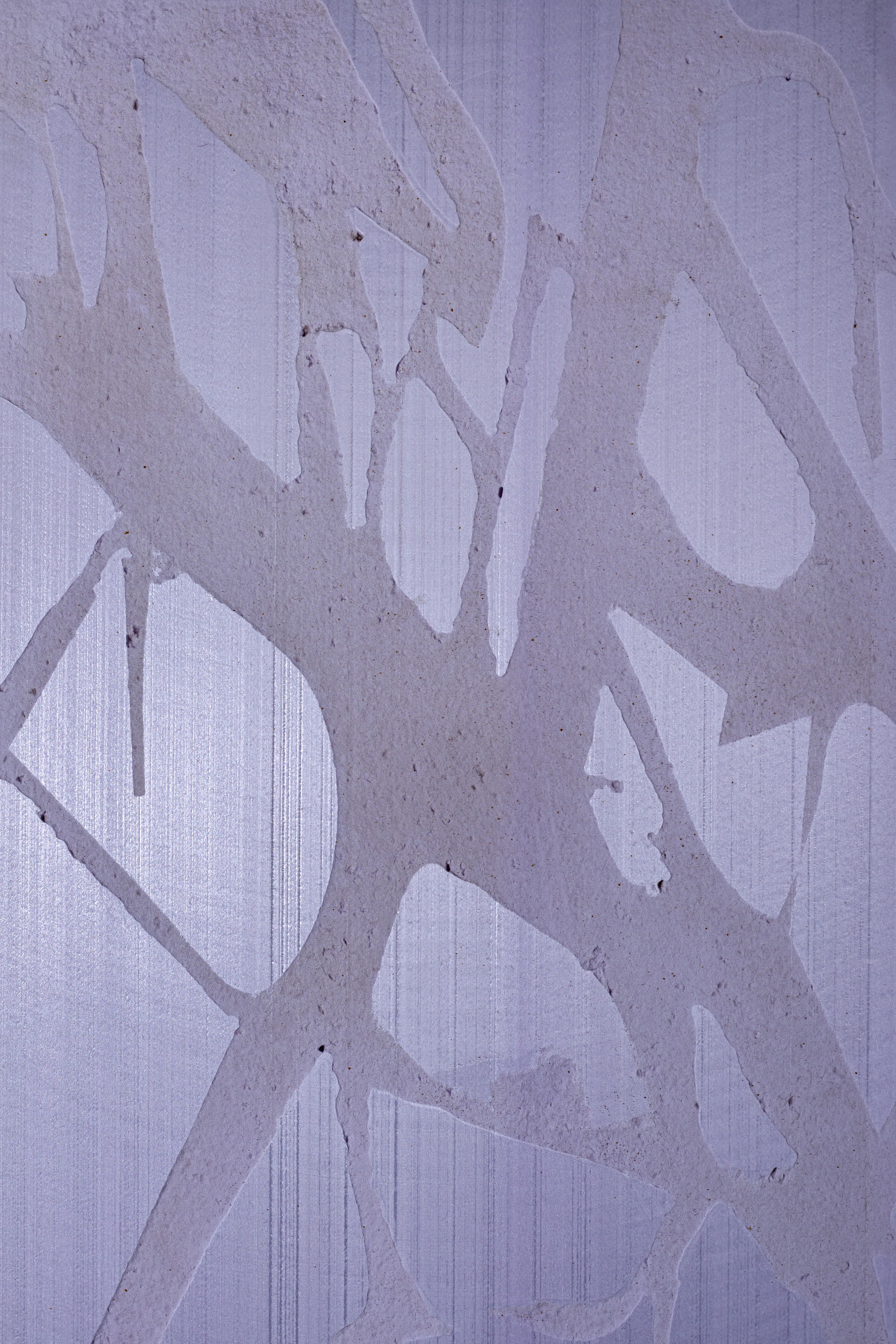

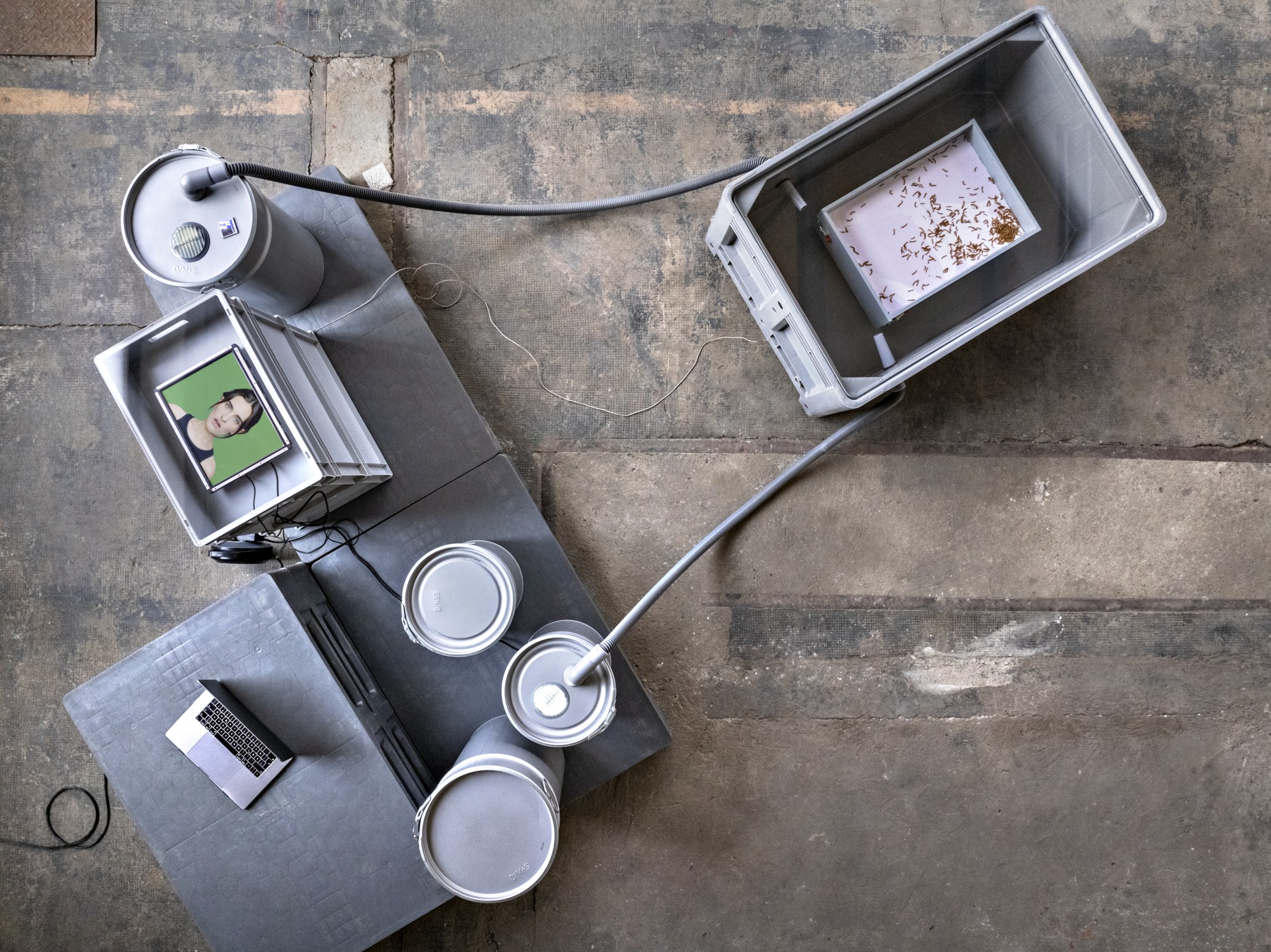
Dimensions variable
EPS insulation panels, mealworms, temperature sensor, control system, liquefied feeding paste, incubator, air circulation system, acrylic glass, Euro pallets, Euro containers
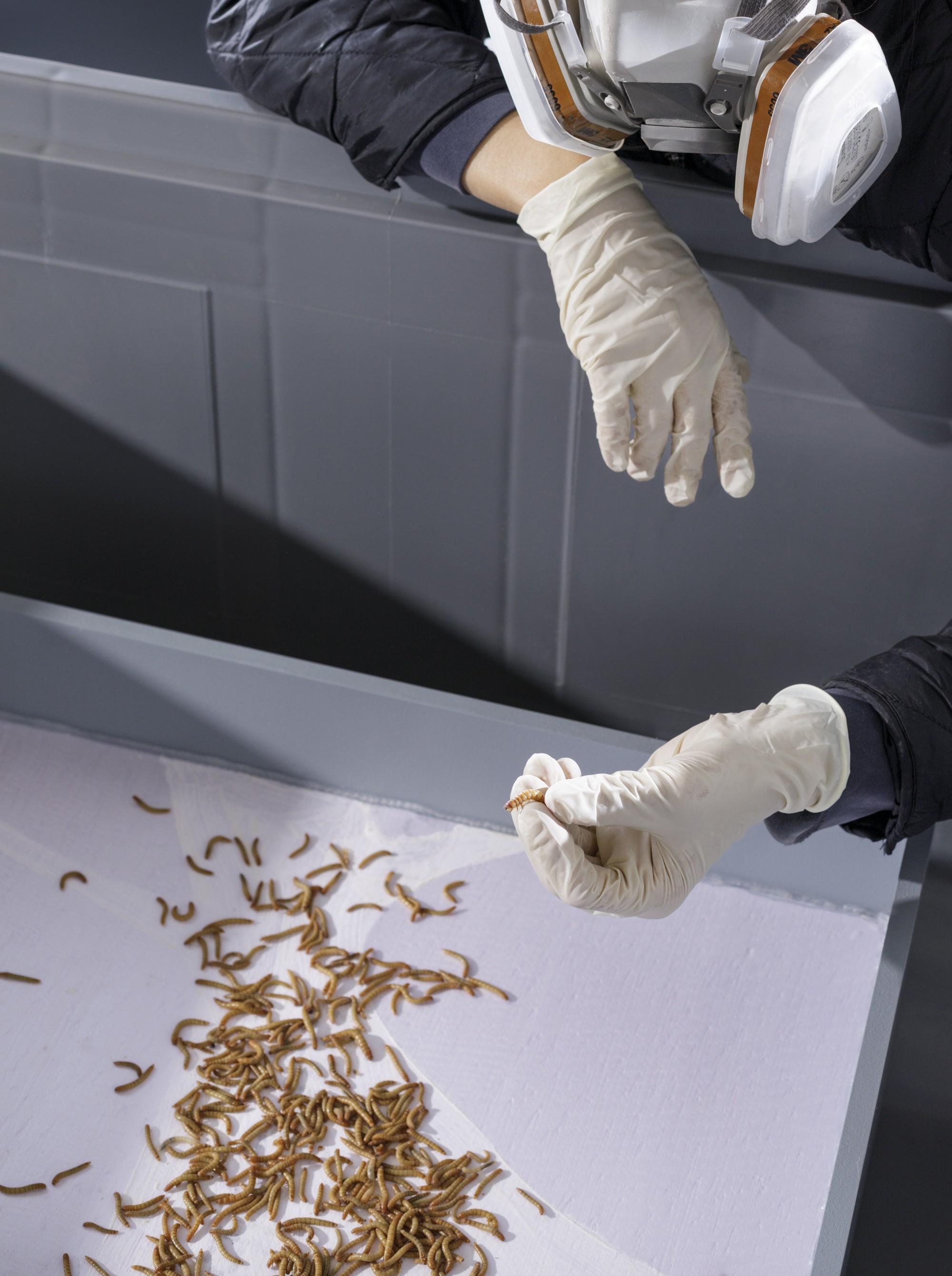
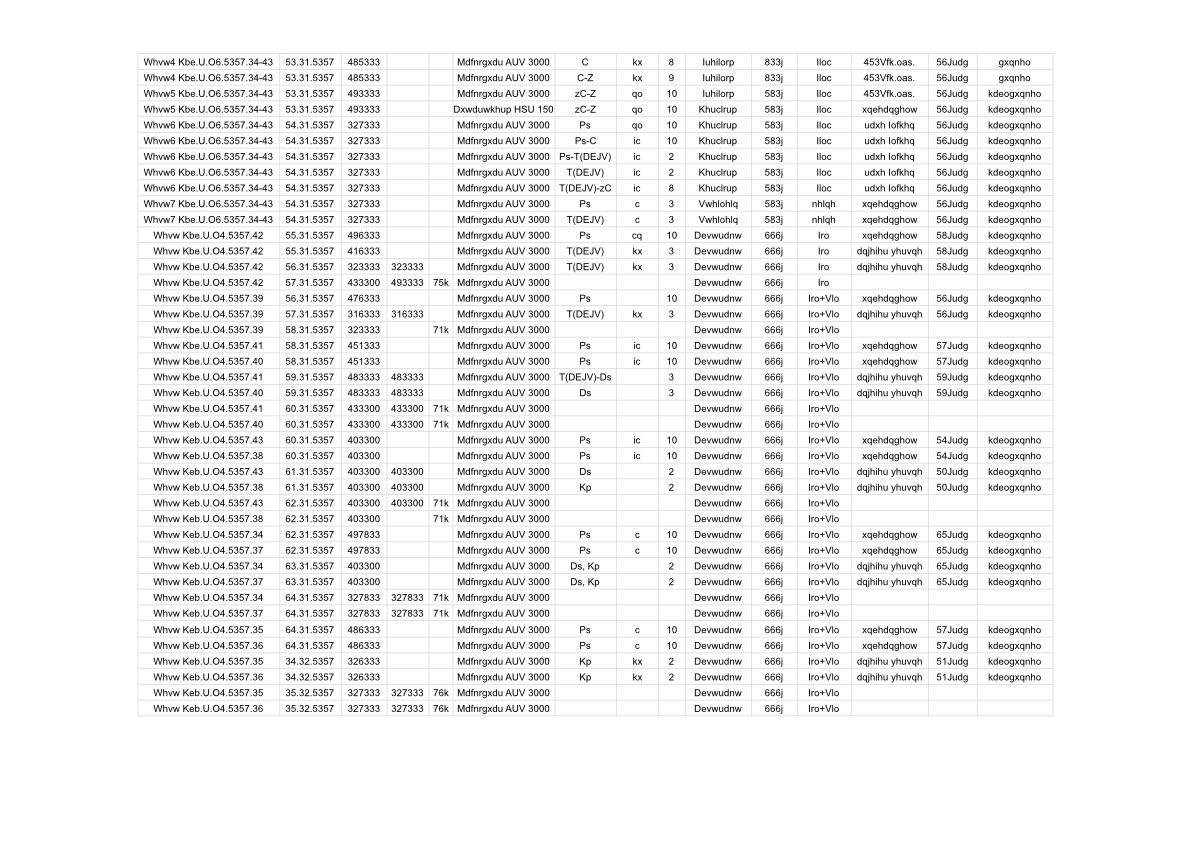
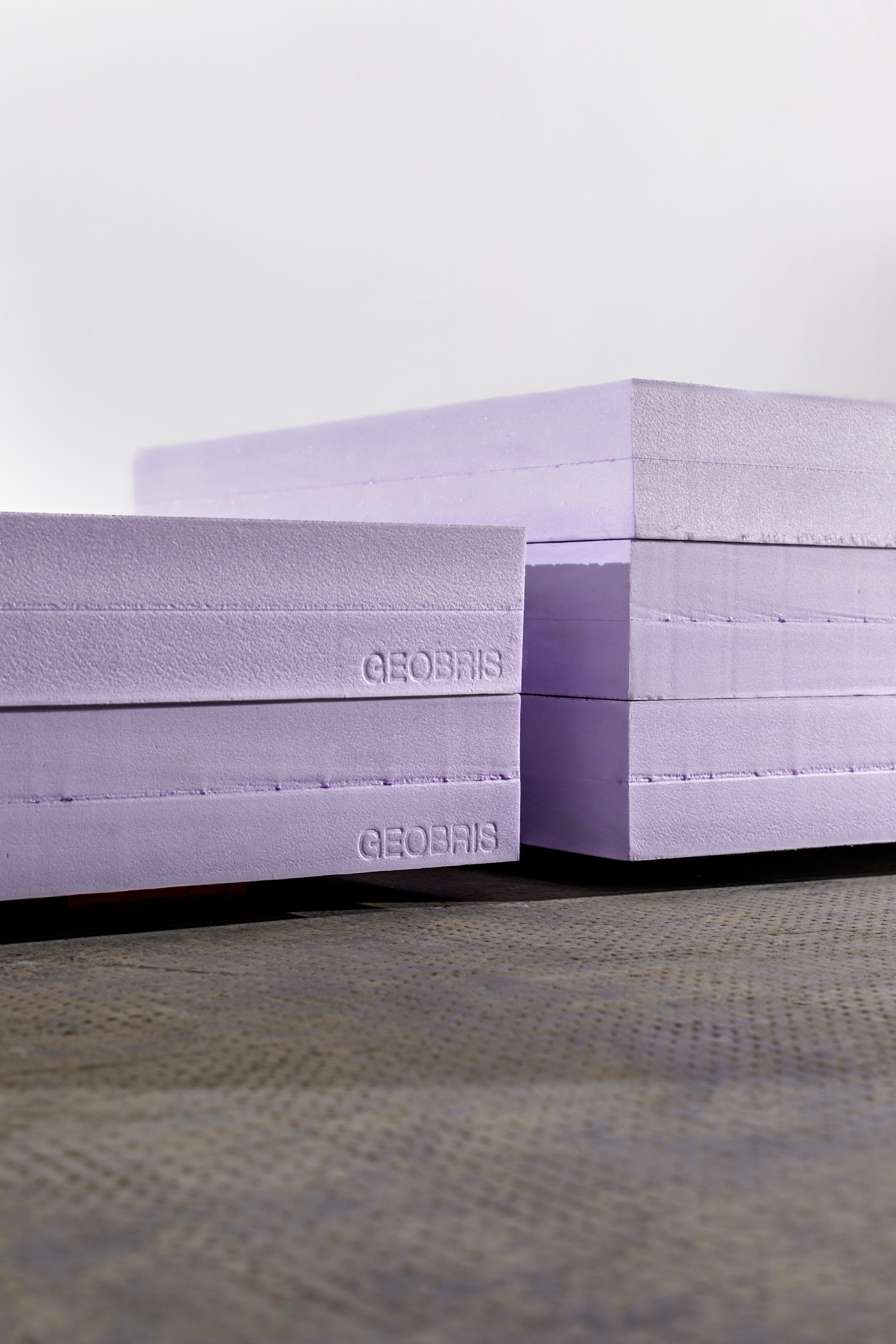
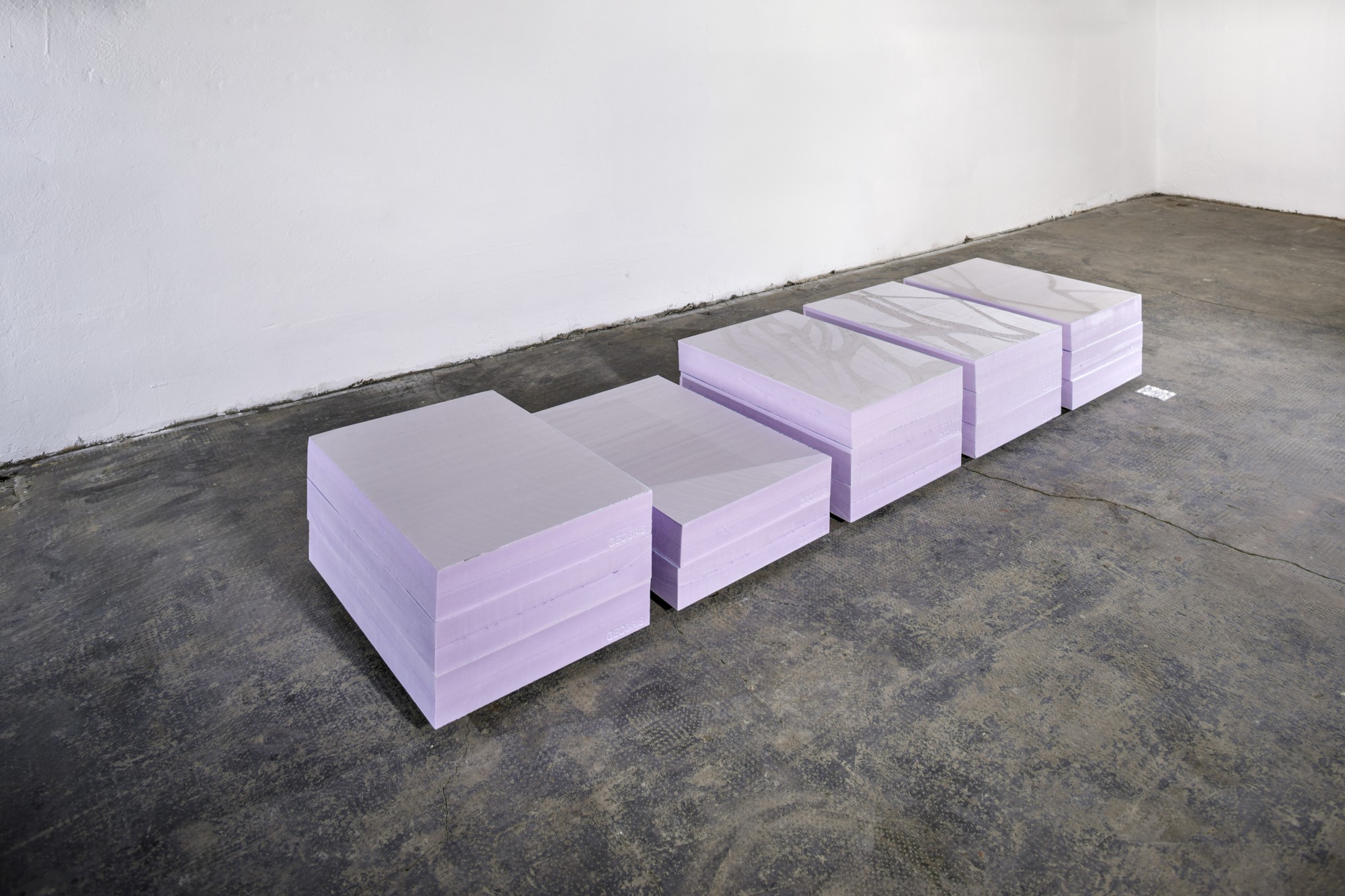
Hyb.Instal.2020.01
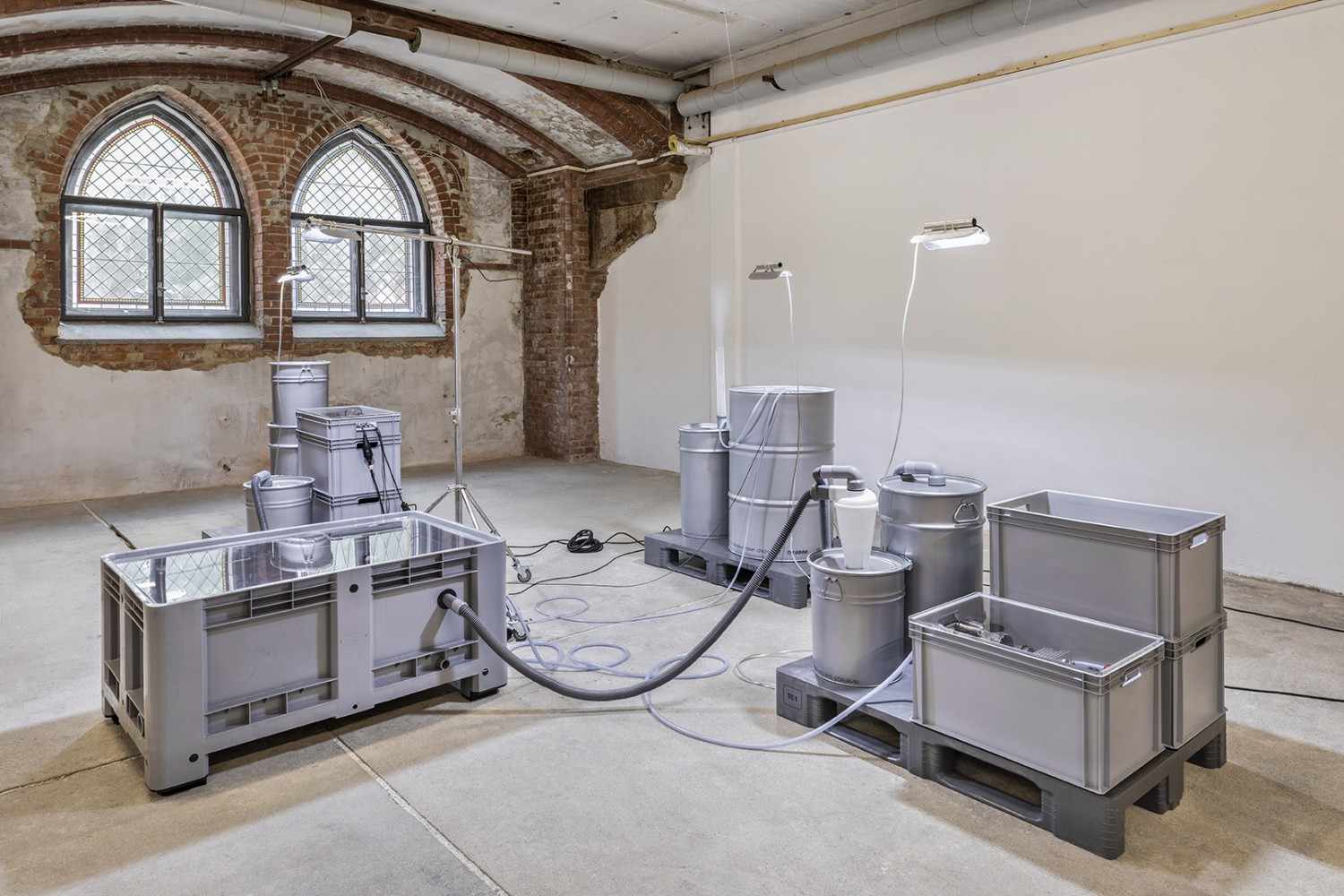
Sculptural laboratory and semi-automated breeding machine, ensuring the supply of mealworms.
„The hubris that tempts us to realize the kingdom of heaven on earth seduces us into transforming our good earth into a hell“ (Popper, Karl)
A human-centric worldview that subjugates nature is reined in by a semi-automated machine directed by the sculptural act of mealworms - mealworms that shape and decompose polystyrene insulation panels, producing peculiarly amorphous sculptures as well as digested residues.
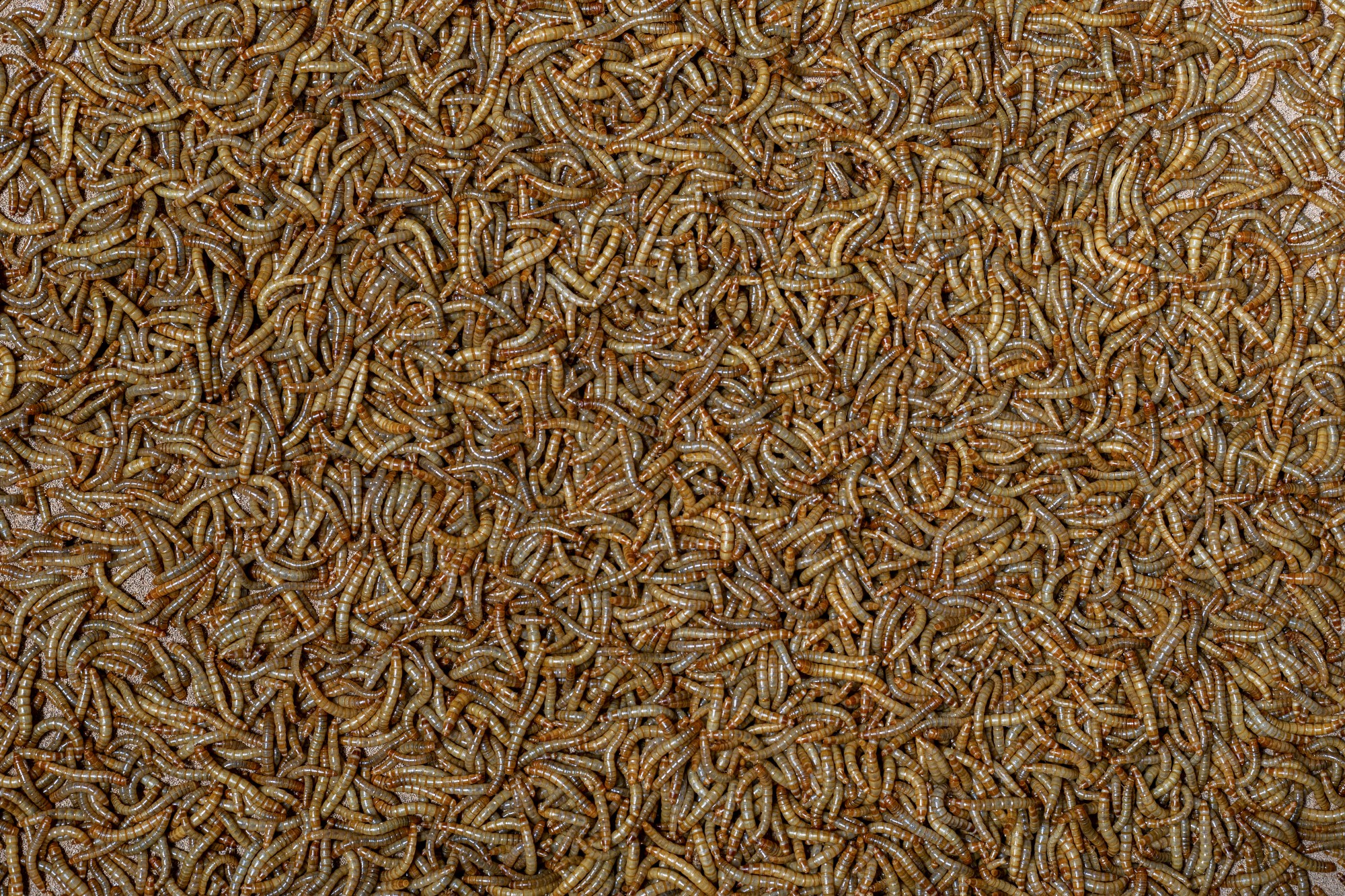
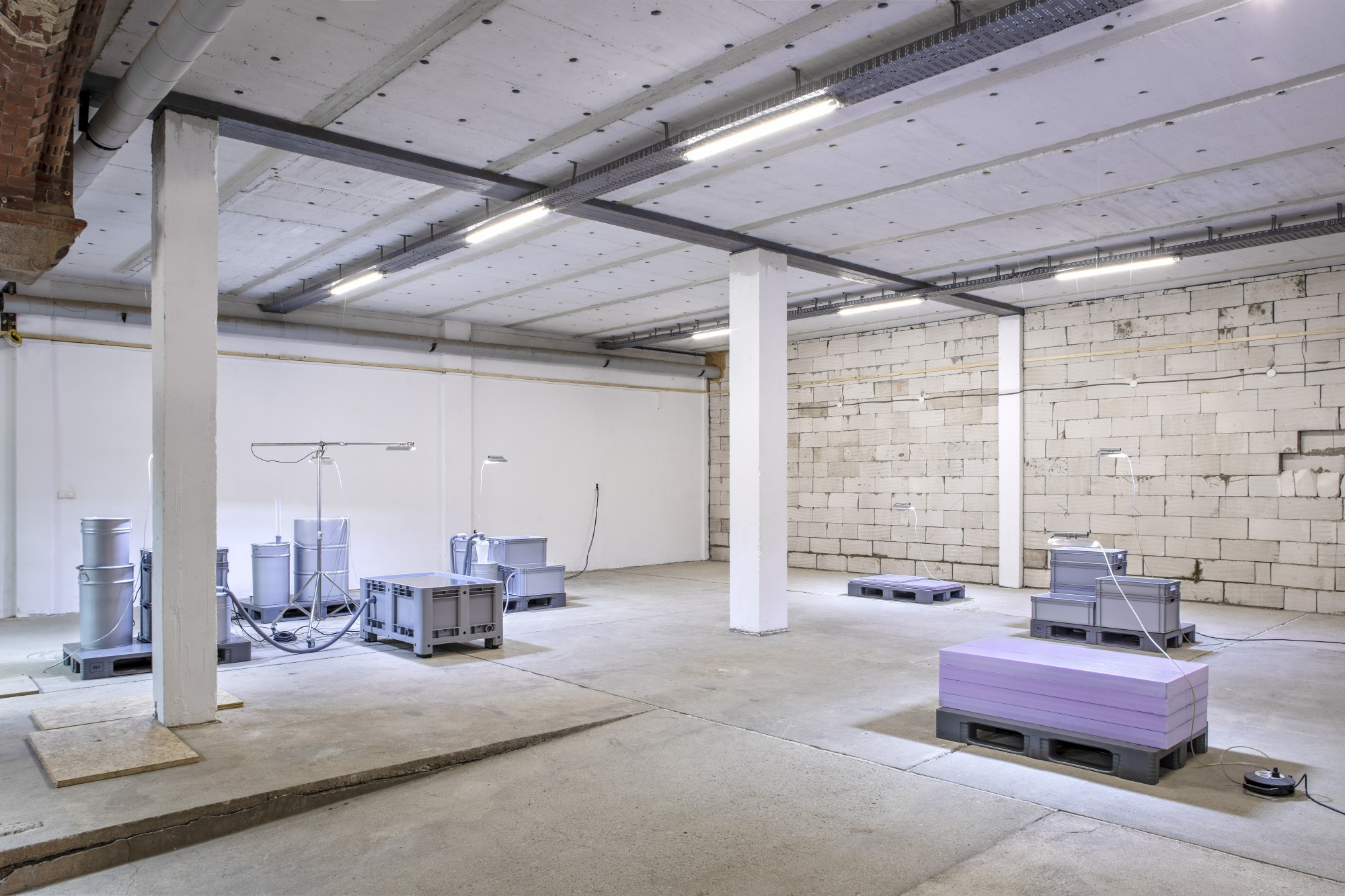
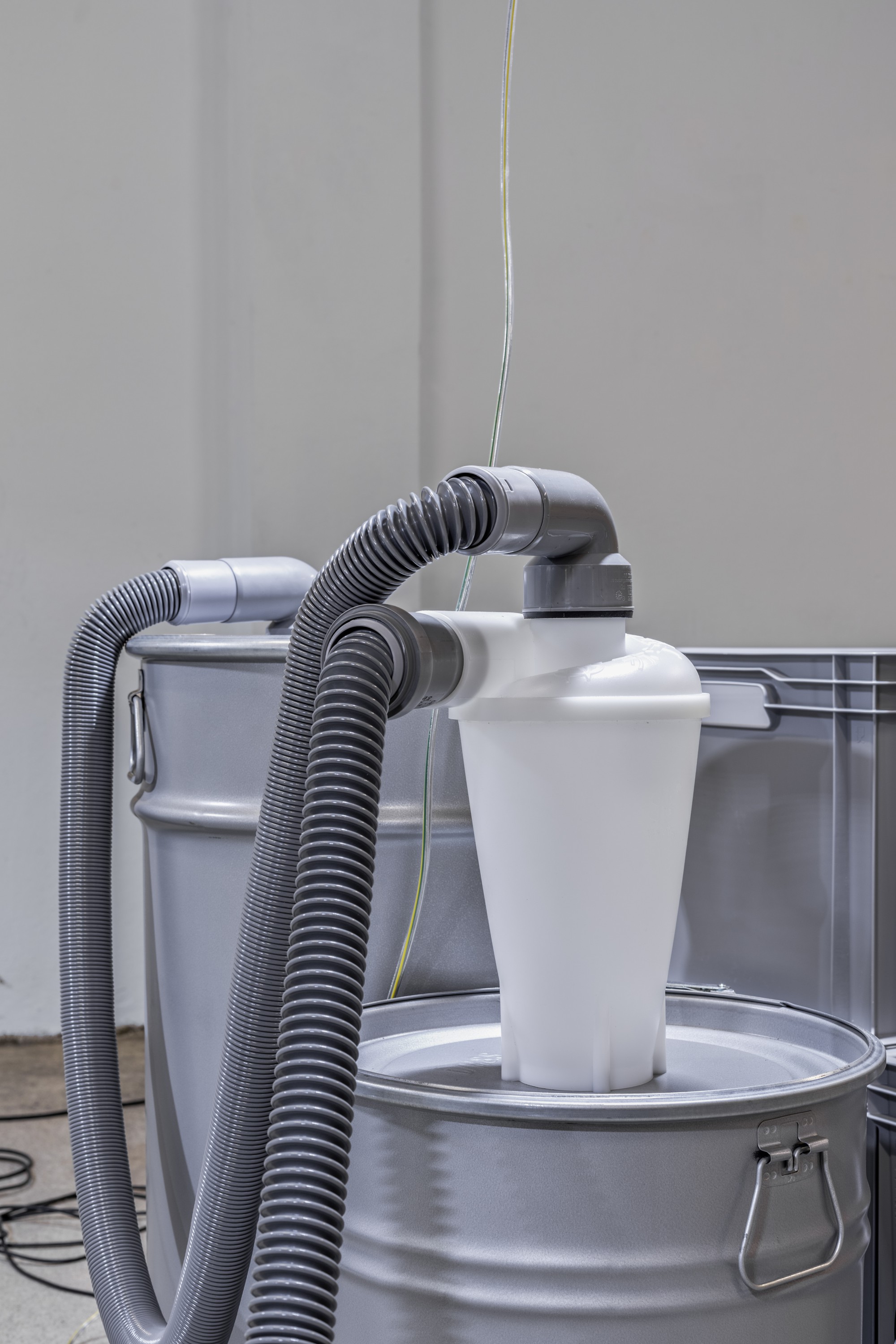
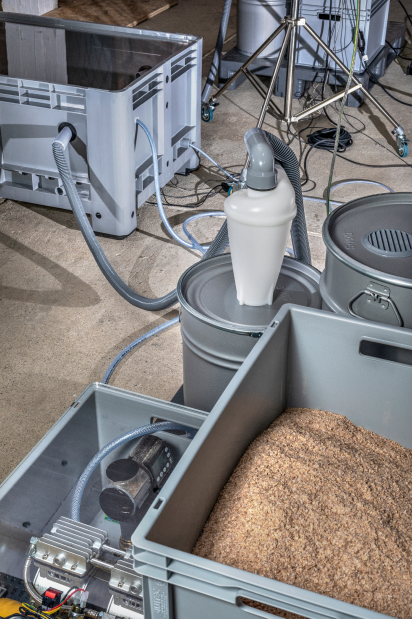
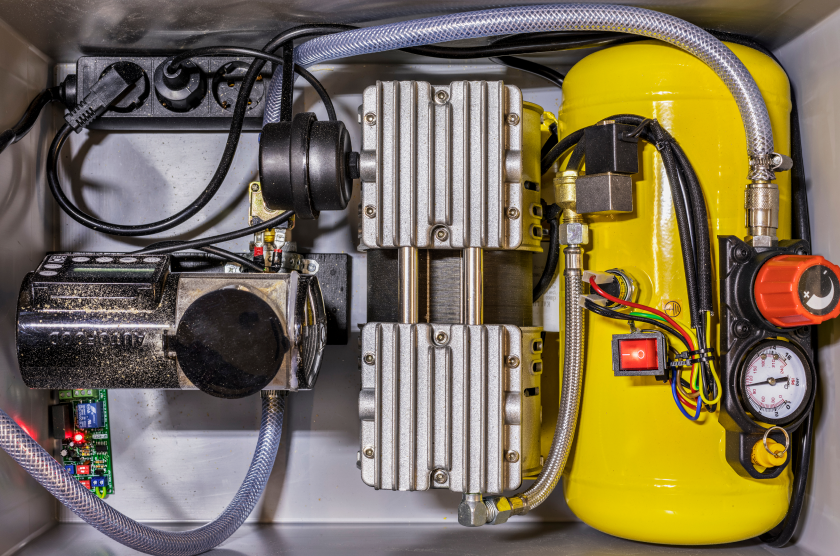
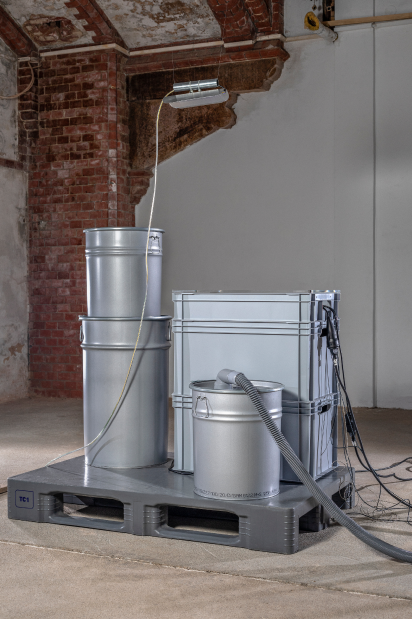
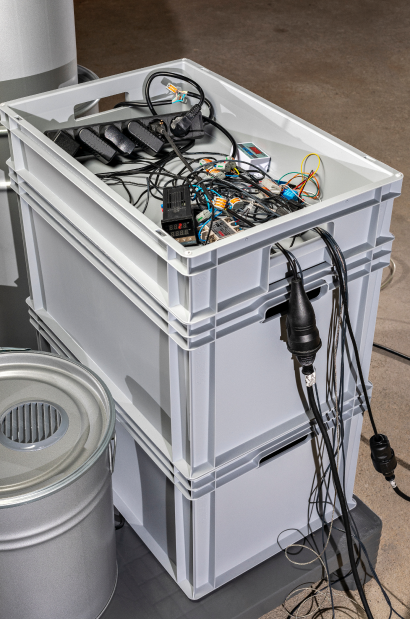

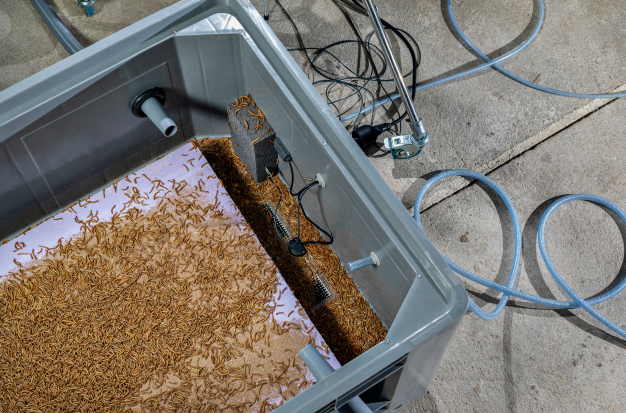
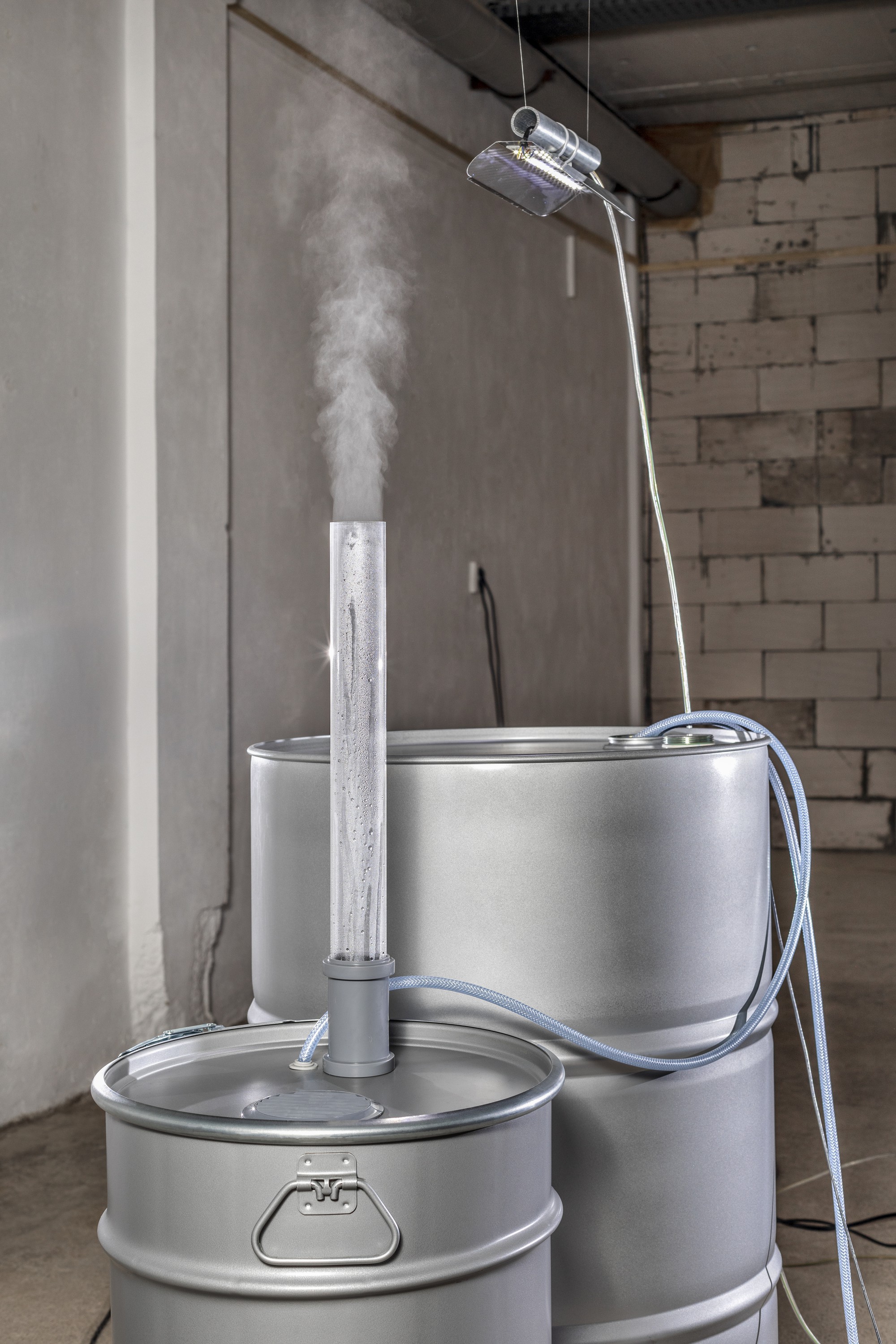
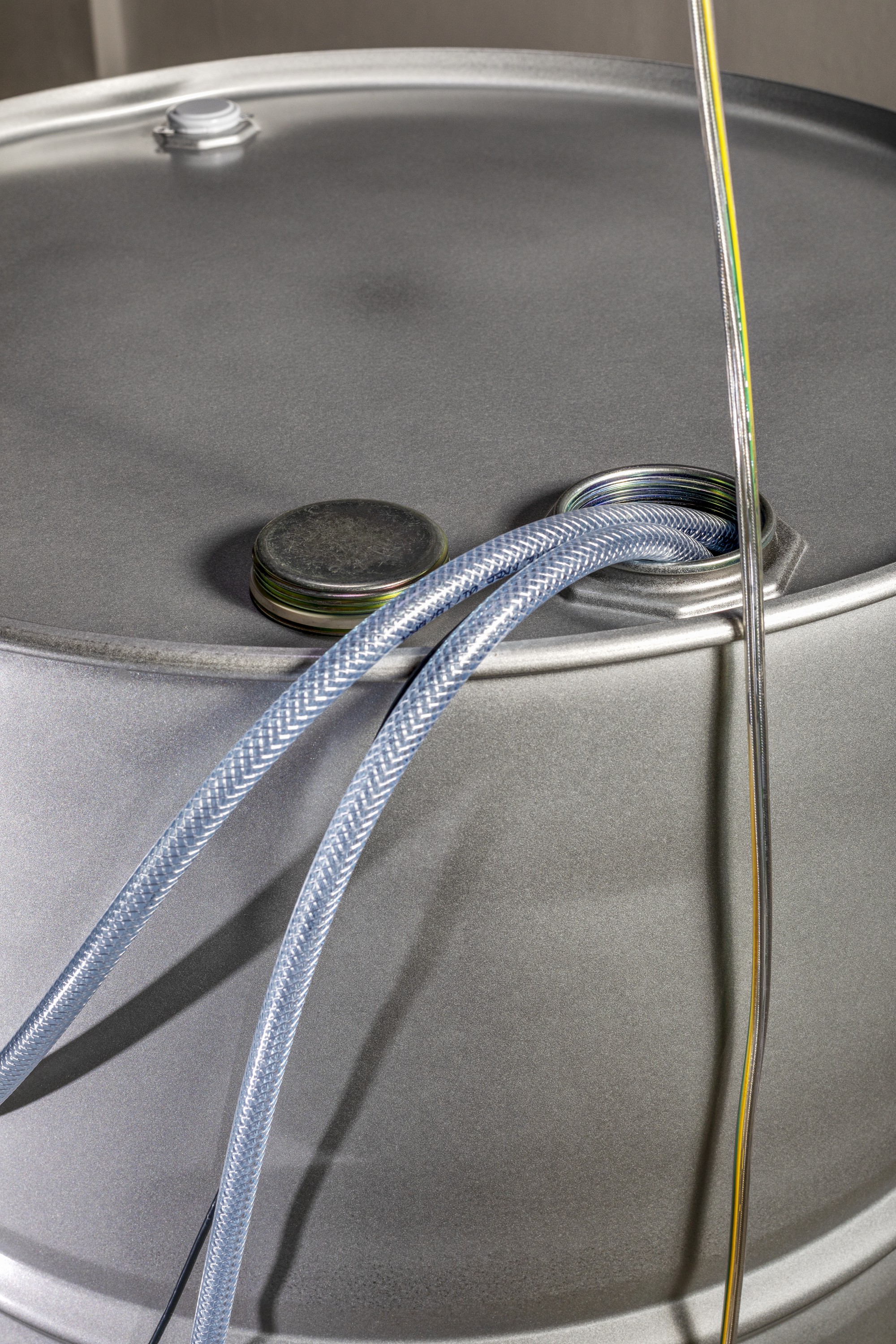

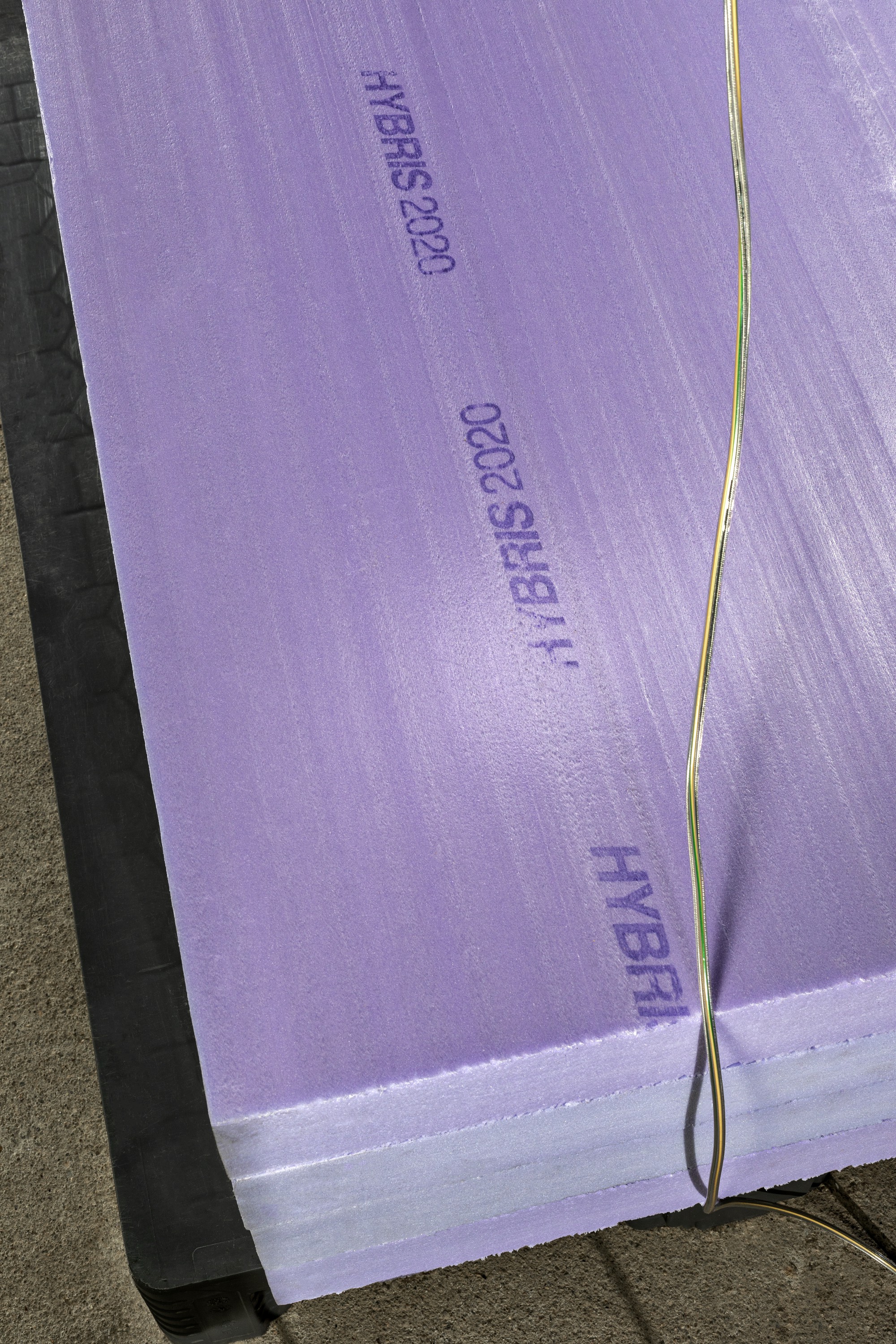
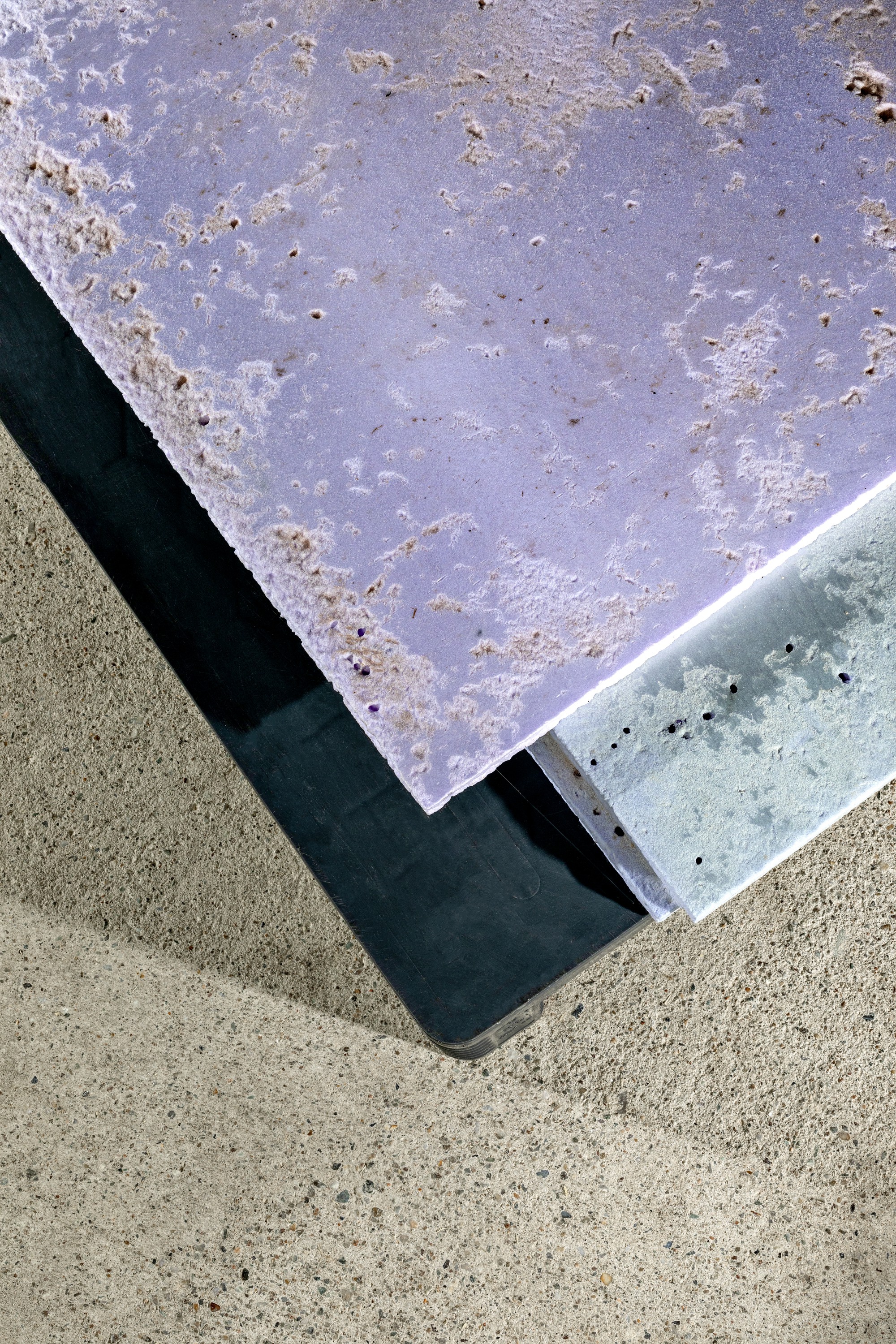
Bottom panel, processed by one kilogram of mealworms for 3 weeks, compared to the top panel, processed for only 7 days.
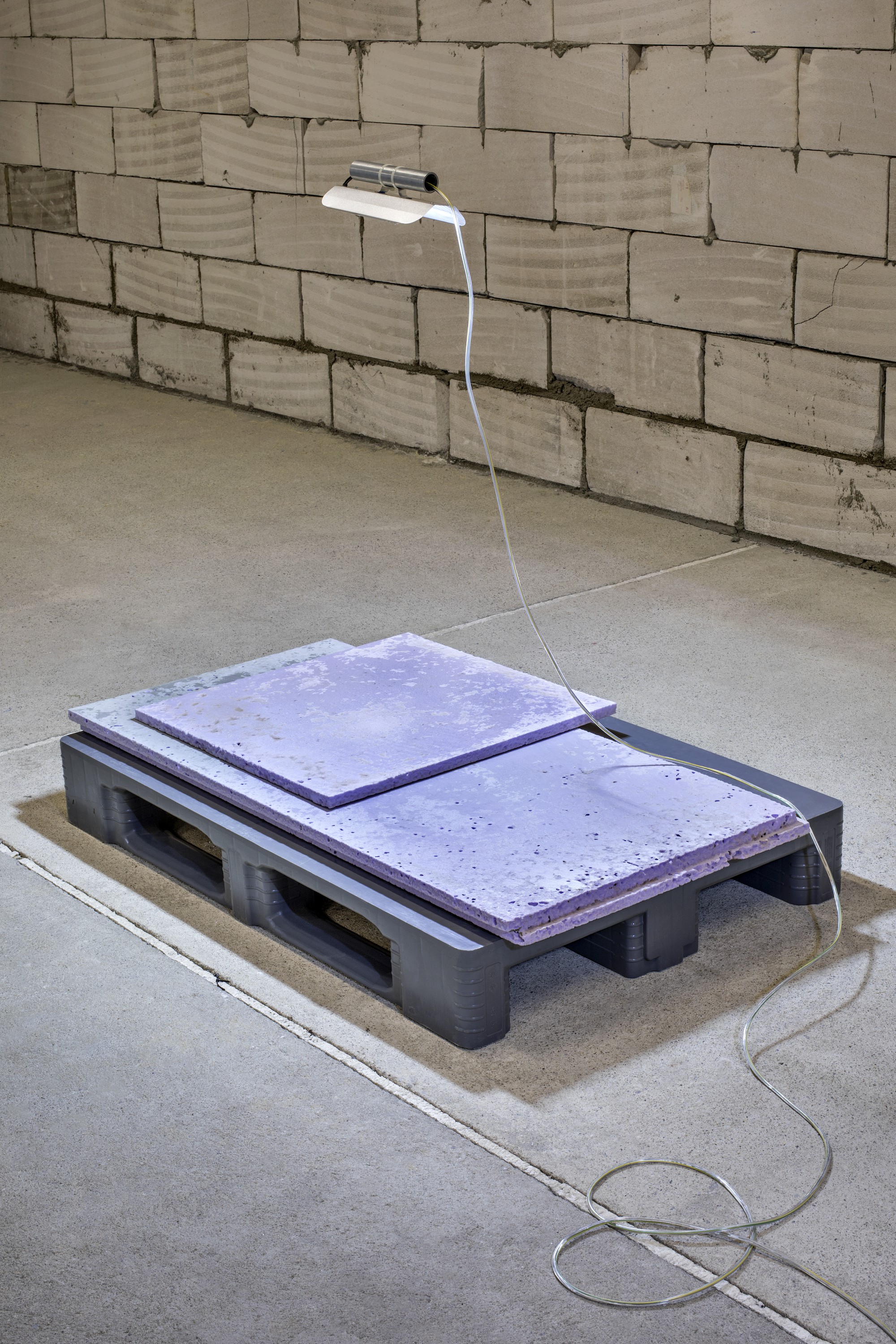
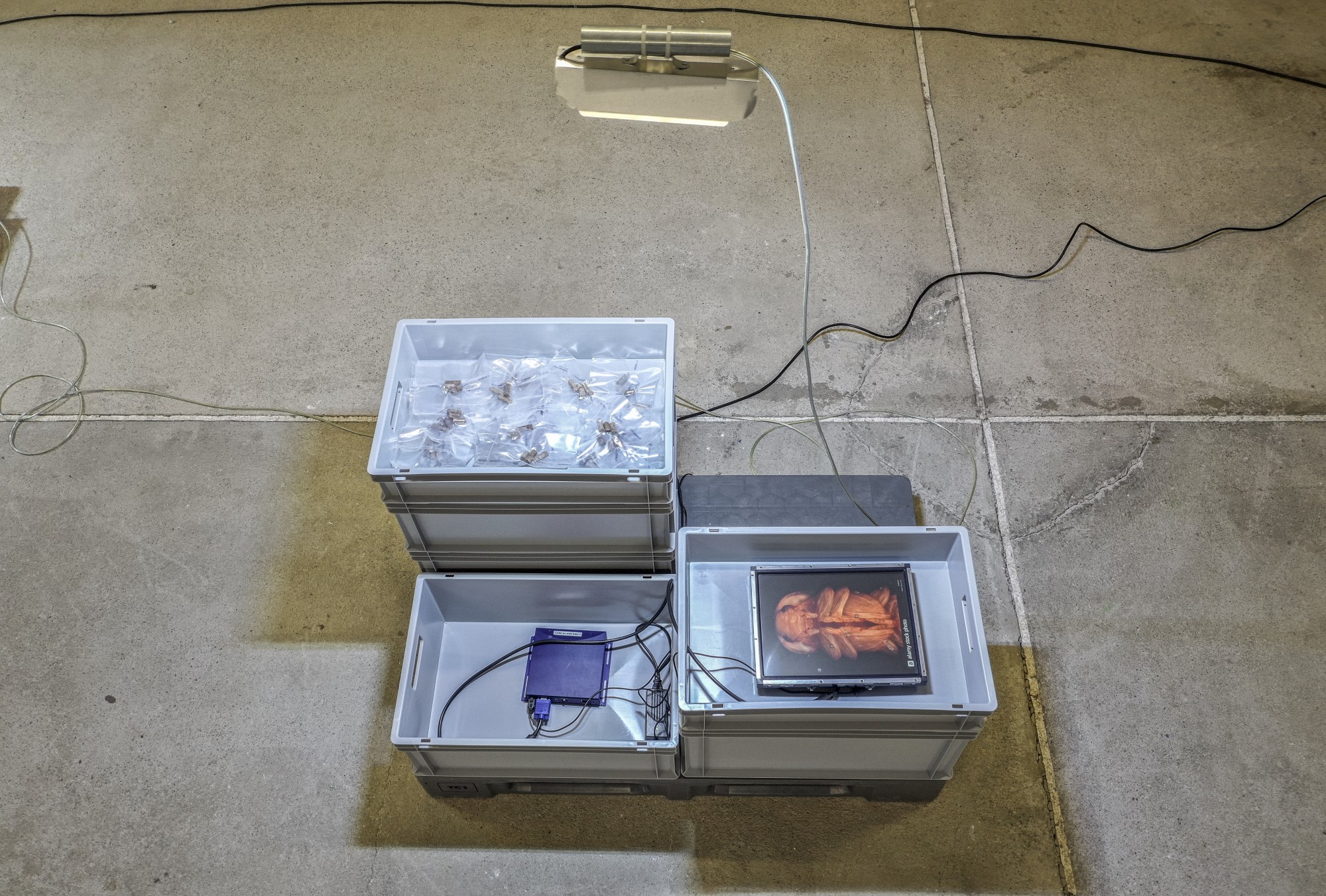
The sculptural end result depicts the Styrodur panels processed by mealworms, which were removed prematurely from the decomposition process.
Relief

Hyb.R.Myth.2021-2022
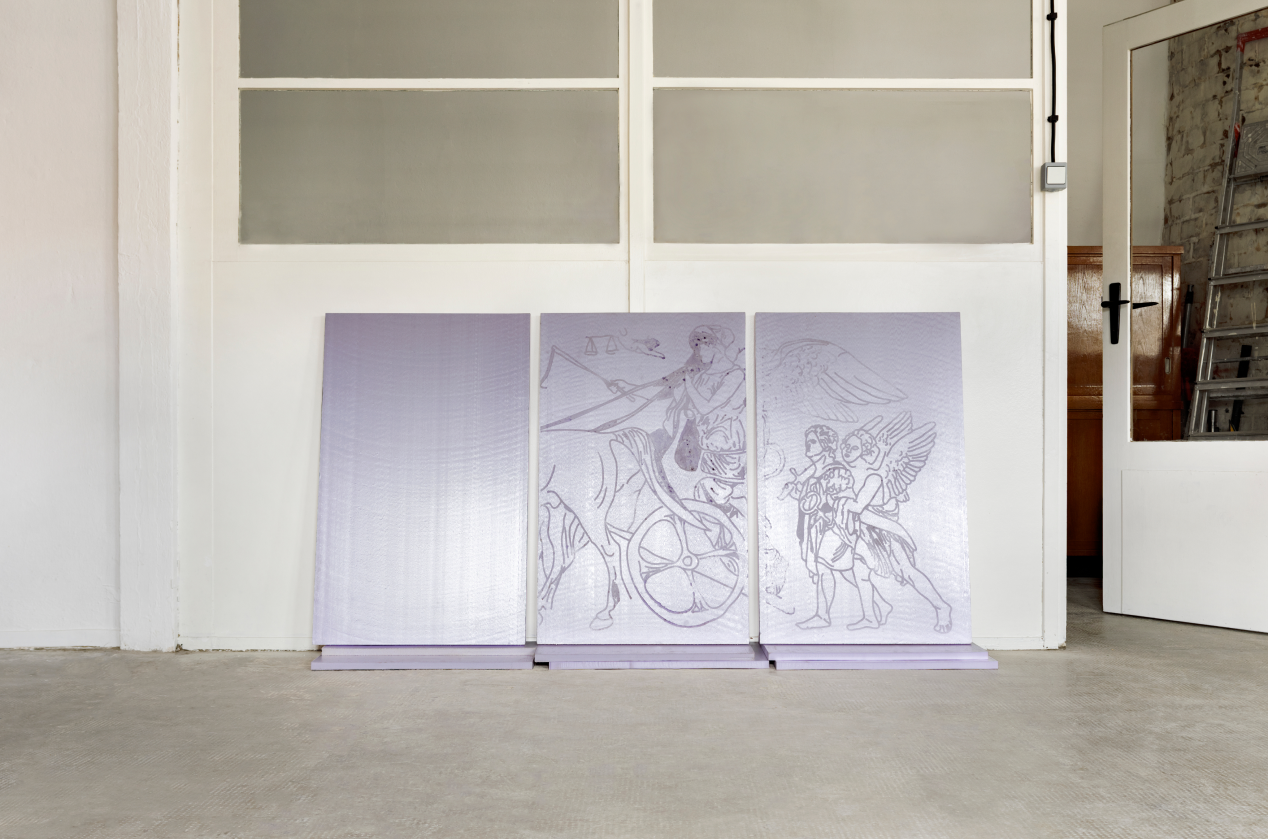
Hyb.R.Myth.2021.01
Relief in Progress: In 2021 Mealworms nibble their way along a stencil into the insulation material. The duration of nibbling varies from plate to plate. Right: five days, Middle: ten days, Left: still untouched. The longer the nibbling duration, the deeper and more pronounced the contours become.
[The creation of this work was made possible by a grant from the Cultural Foundation of the Free State of Saxony.]
Control, purification, and transformation – hubris is inevitably followed by nemesis! Mealworms become creators of reliefs that narrate powerful acts of revenge by female protagonists from Greek mythology.
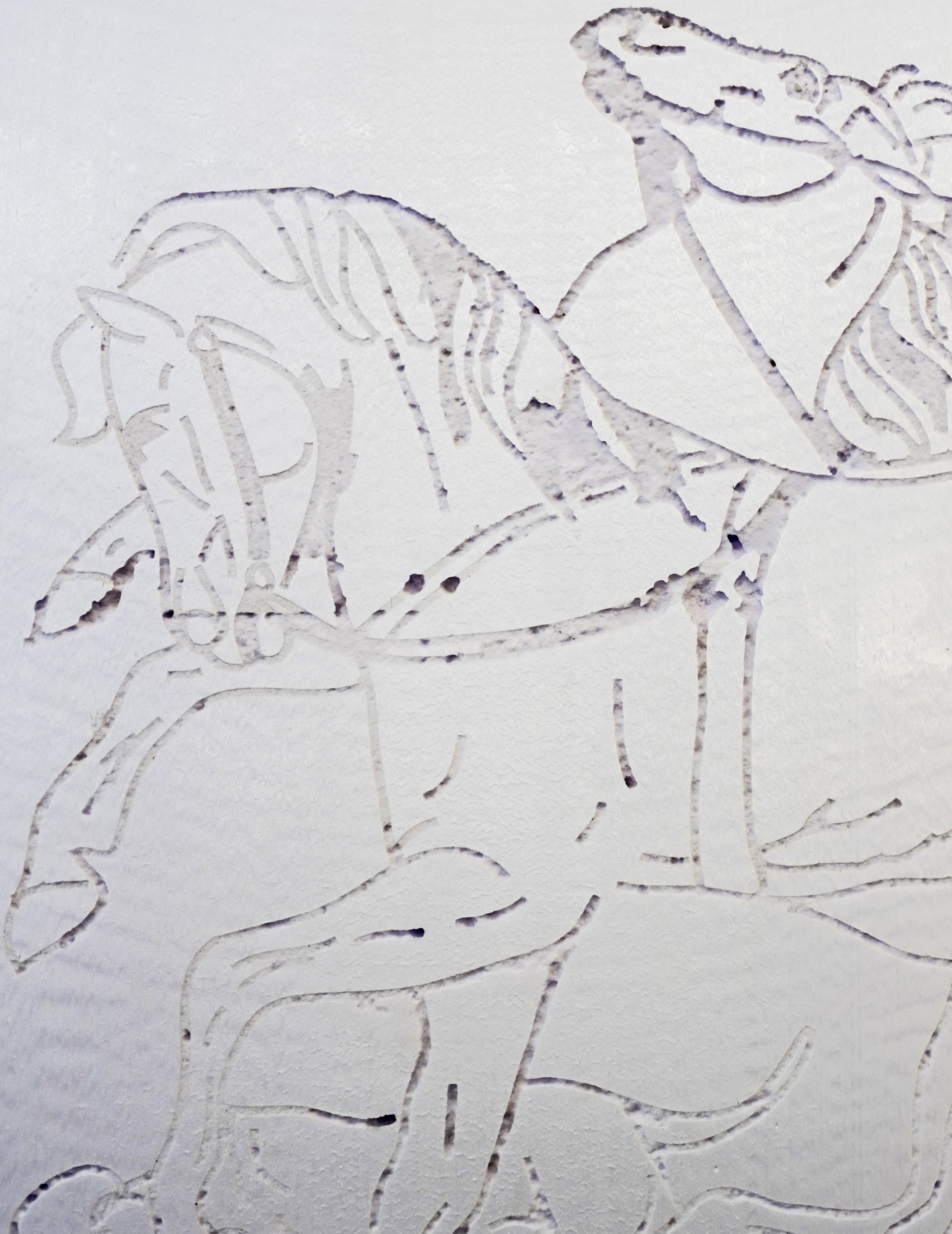
The strong burial instinct of the mealworms results in deep furrows and holes in the insulation material. The longer the material is exposed to the nibbling process, the more irregular and amorphous it appears.
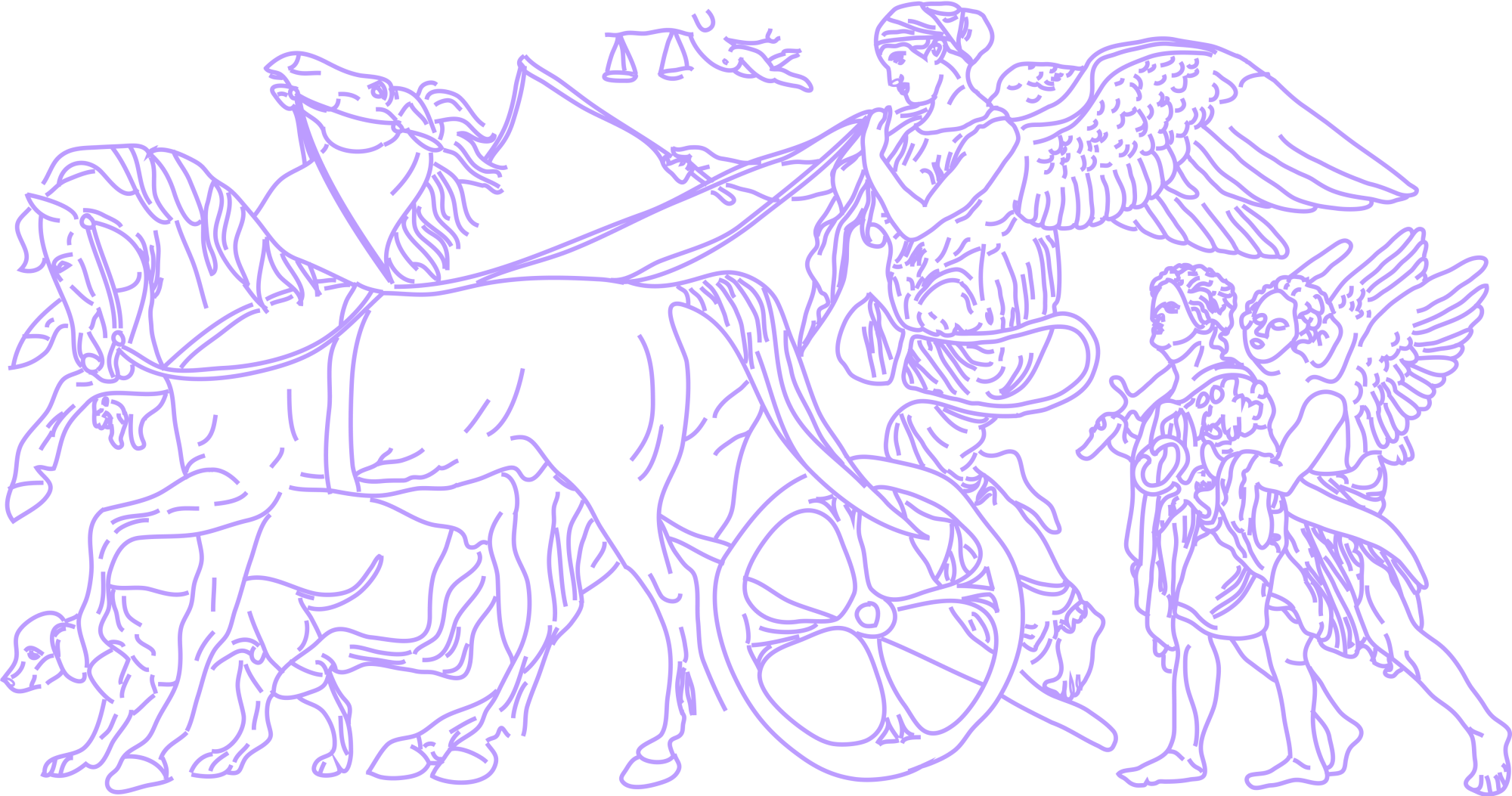
Nemesis, the Greek goddess of retribution and righteous anger, ensures balance and vengeance in the face of excessive pride. As the daughter of Nyx, the goddess of night, she punishes the arrogant with her iron scepter. Nemesis embodies justice and the pursuit of balance in Greek mythology.
Revenge
In antiquity, revenge was regarded as a matter handled by women. Known entities of vengeance, gods of revenge and personifications of retribution and justice are all female figures. For instance, the goddesses of Olympus were renowned for their intrigue and for maneuvering their enemies and adversaries into bizarre situations from which there was no escape.
The belief that women could not pose a threat to a fearless hero has led to the downfall of many male figures in mythological history. An example of this is Samson, who regarded the three brutal attacks on his life as a game played by his beloved Delilah.
The man who proved invincible in mano-a-mano combat fails in a duel against a woman. The reason for this is that men often succumb to a deceptive judgment based on the assumption that women are weak, sweet, and lacking in character. This image is systematically disseminated and leads to a misjudgment regarding the abilities and strengths of women.
Even in ancient Greek society, the social and legal status of women was greatly restricted, as they were not legally or financially independent. Only through marriage to an Athenian citizen did a woman obtain the status of a citizen and, consequently, certain rights and the opportunity to participate in political decisions. Due to gender-specific education, societal role expectations, and disadvantages faced by women in education and employment, criminal behavior is less frequently observed in women than in men. These differences are not surprising, as women in many cultures still face social control mechanisms that also prevent or limit criminal actions. Women were subject to these mechanisms even in antiquity. Only under specific circumstances, which required the interaction of multiple factors, did women break with these norms and take actions of revenge themselves. Even today, it is observed that women are more likely to resort to illness or depression than to commit crimes. Under specific conditions and circumstances, however, women can direct their aggressions against the perpetrators who triggered them, rather than typically against themselves. 1
-
1Wilhelm, 2014.
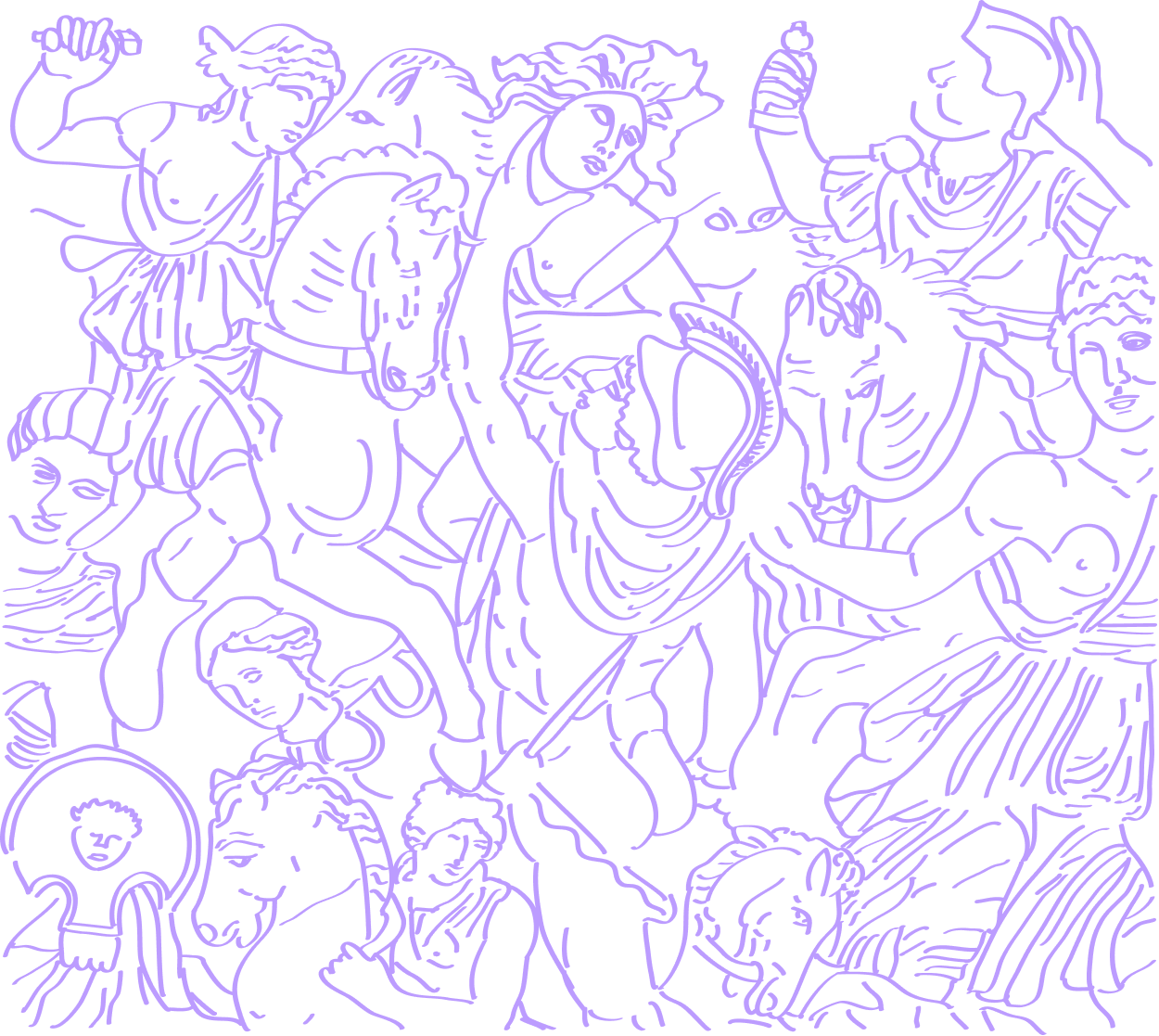
Replica sarcophagus depicting the Amazonomachy, Achilles, and Penthesilea, dating back to around 200 AD.
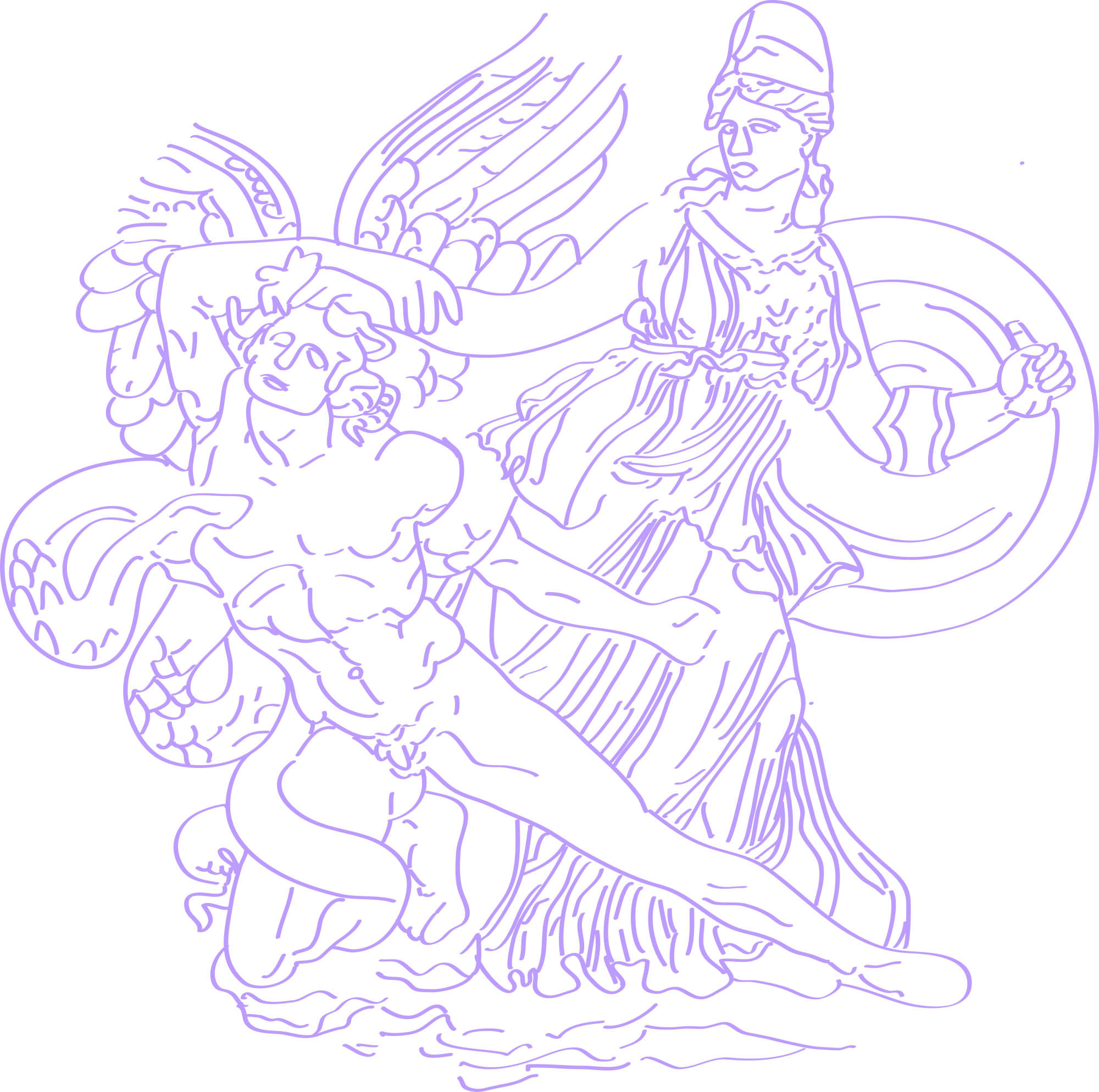
Replica of Athena, Gigantomachy frieze from the Pergamon Altar, 2nd century BCE.
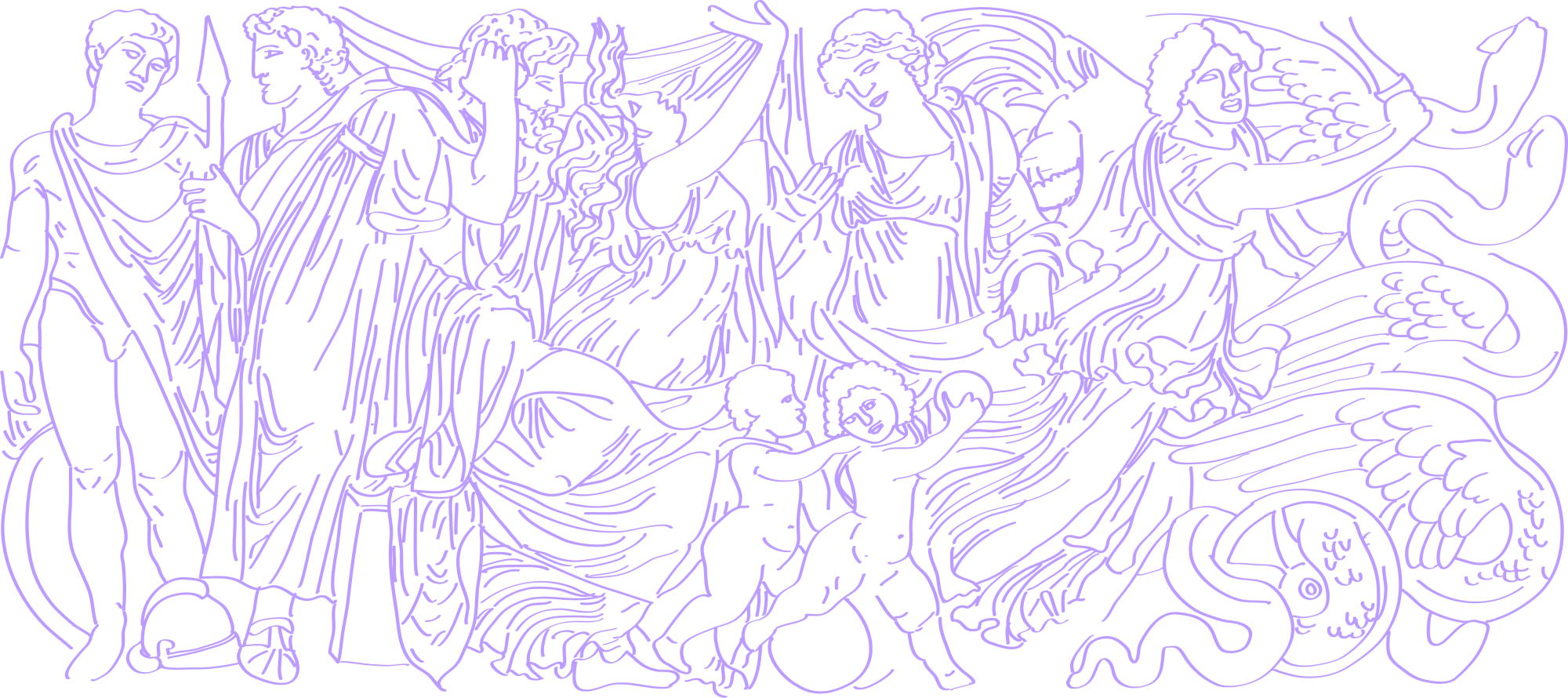
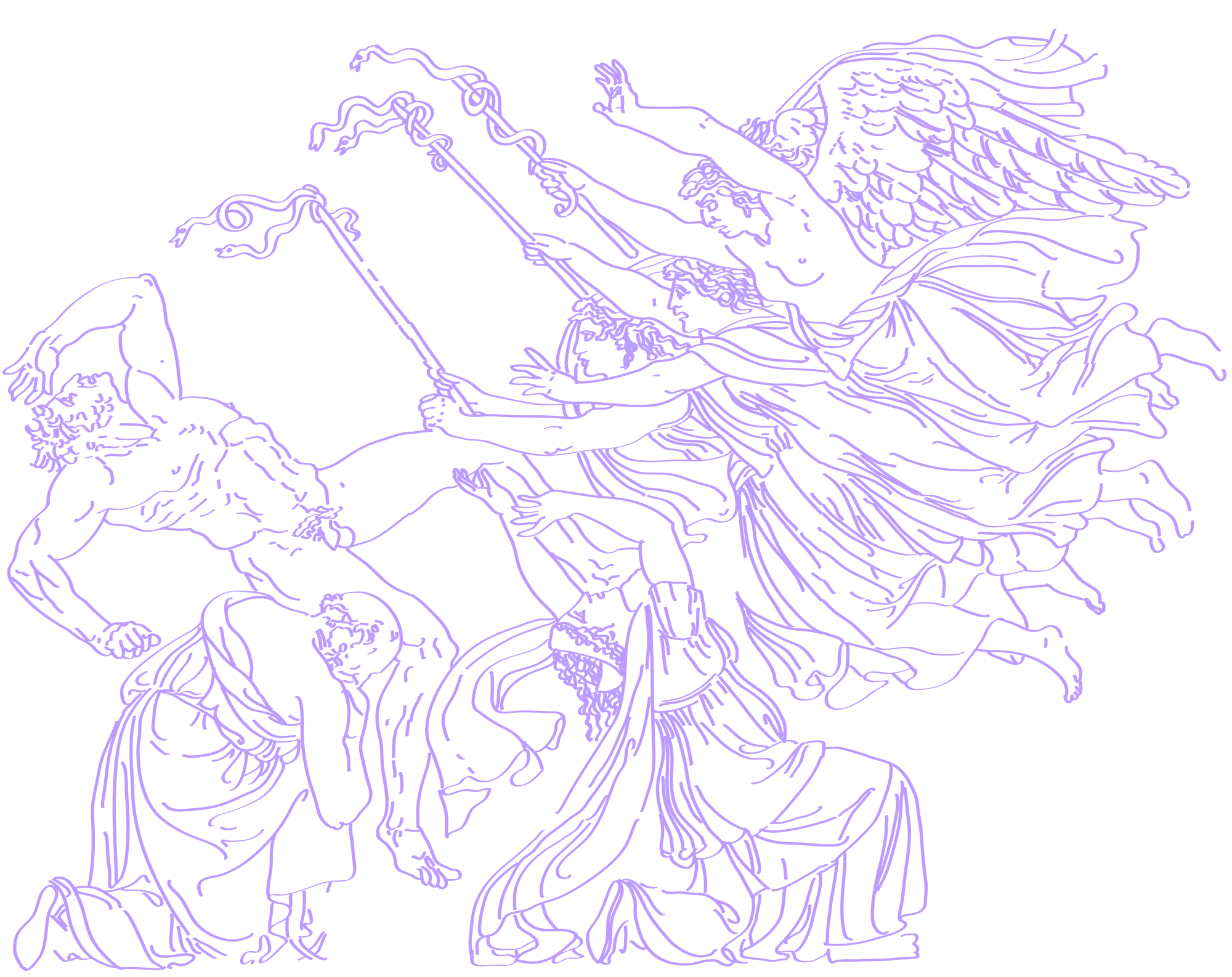
Depiction of the portrait of Medea on a sarcophagus, discovered in Rome, near the Porta San Lorenzo (Porta Tiburtina), in 1887.
Replica of "Persecution of Orestes" by the painter Johann Gottfried Schadow.
Hyb.R.2020.07-08
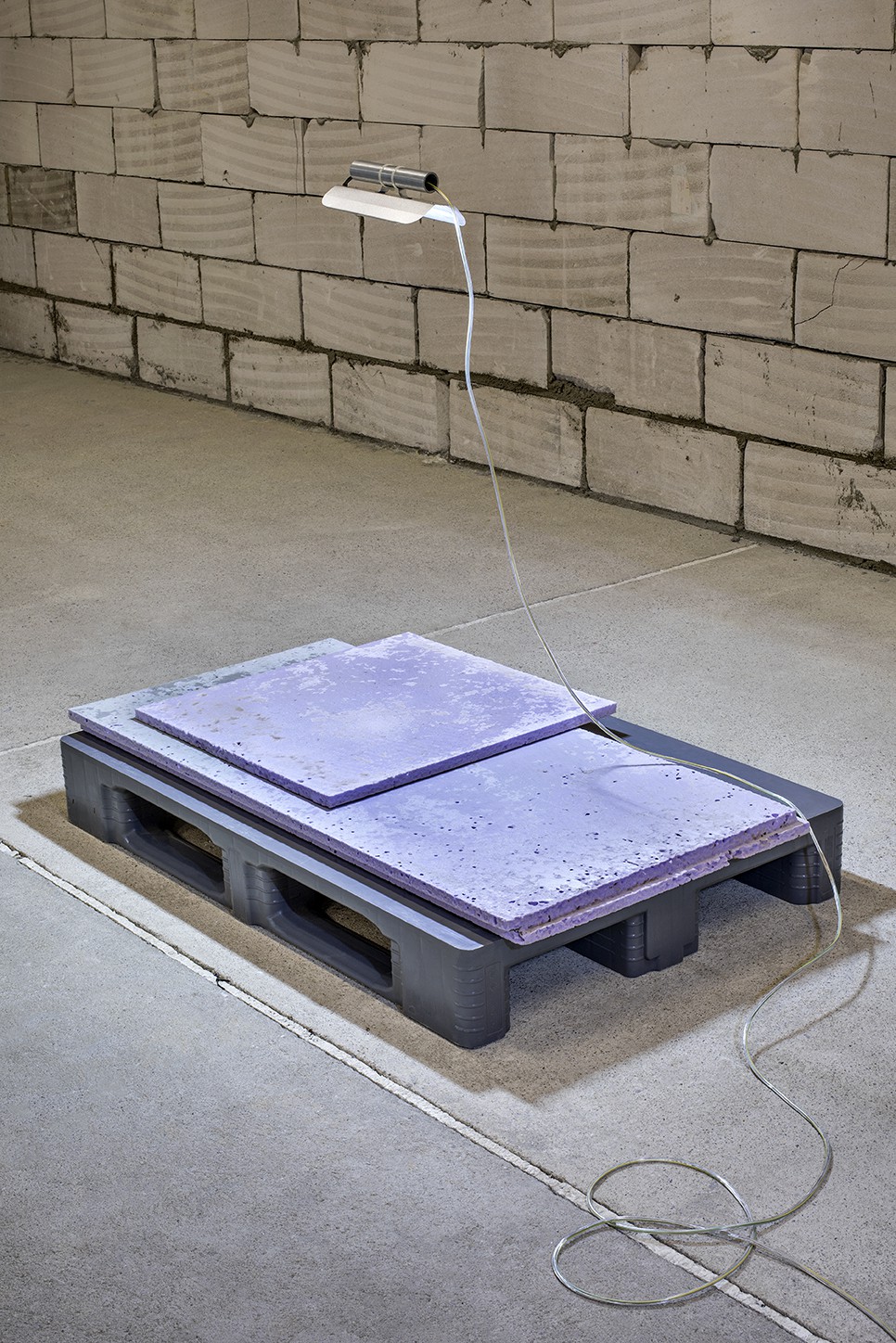
Hyb.R.2020.07-08
In the exhibition space of Westpol A.I.R.Space.
The initial sculpting results provide insight into the working process of the larvae. Various parameters are recorded during the mealworms' carving of the reliefs, including room temperature, food supply, number of mealworms in kilograms, as well as the size and thickness of the plate.
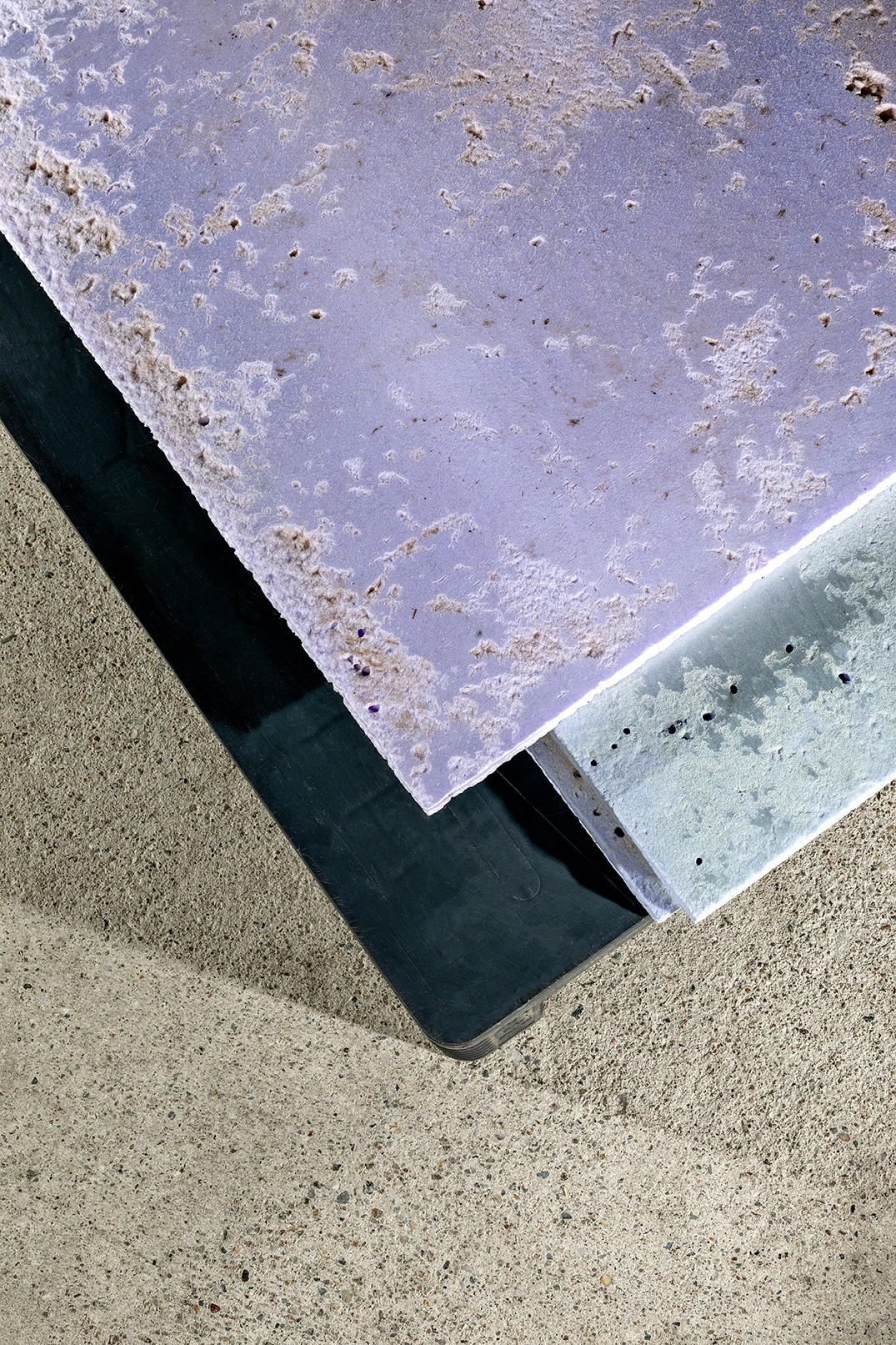
Lower plate, which was worked on by one kilogram of mealworms for 3 weeks, compared to the upper plate, which was only worked on for 7 days.
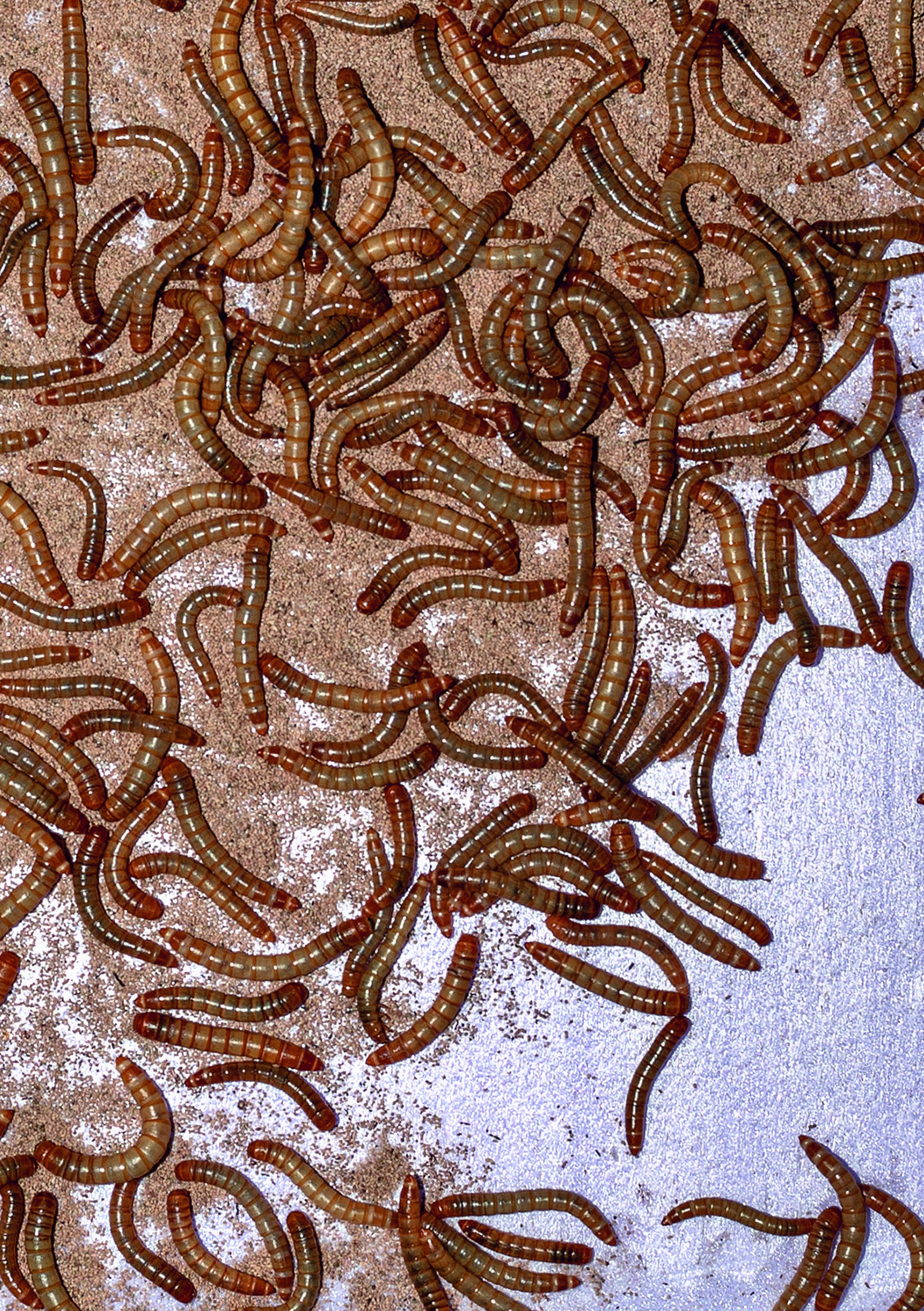
Material

Hyb.Mat.2024.01–20
GEOBRIS
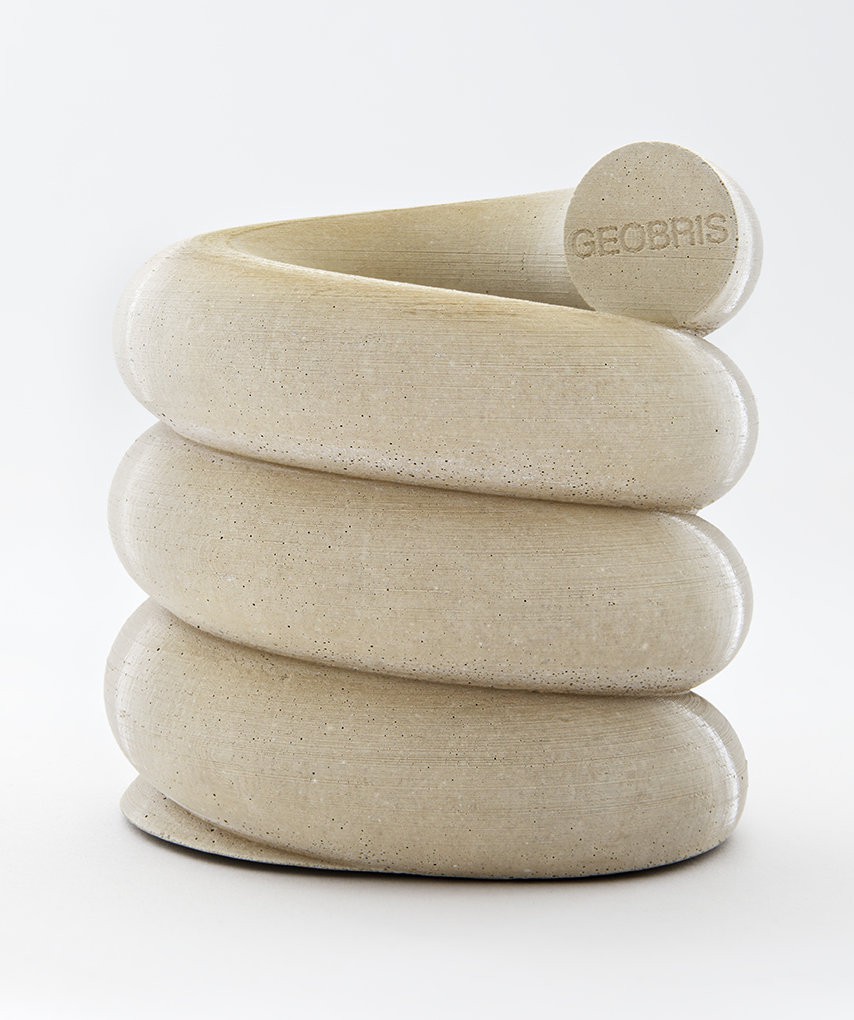
Hyb.Obj.2024.02
A tactile object made of GEOBRIS for the Futurium. Material: Ash from mealworm frass bound with geopolymer-based binder, Dimensions: approx. 14 x 14 cm
Geobris is a construction material derived from ash originating from mealworm feces. This ash is then bound with a geopolymer-based binder. The material could present a sustainable alternative to conventional building materials, contributing to waste reduction and promoting a circular economy.

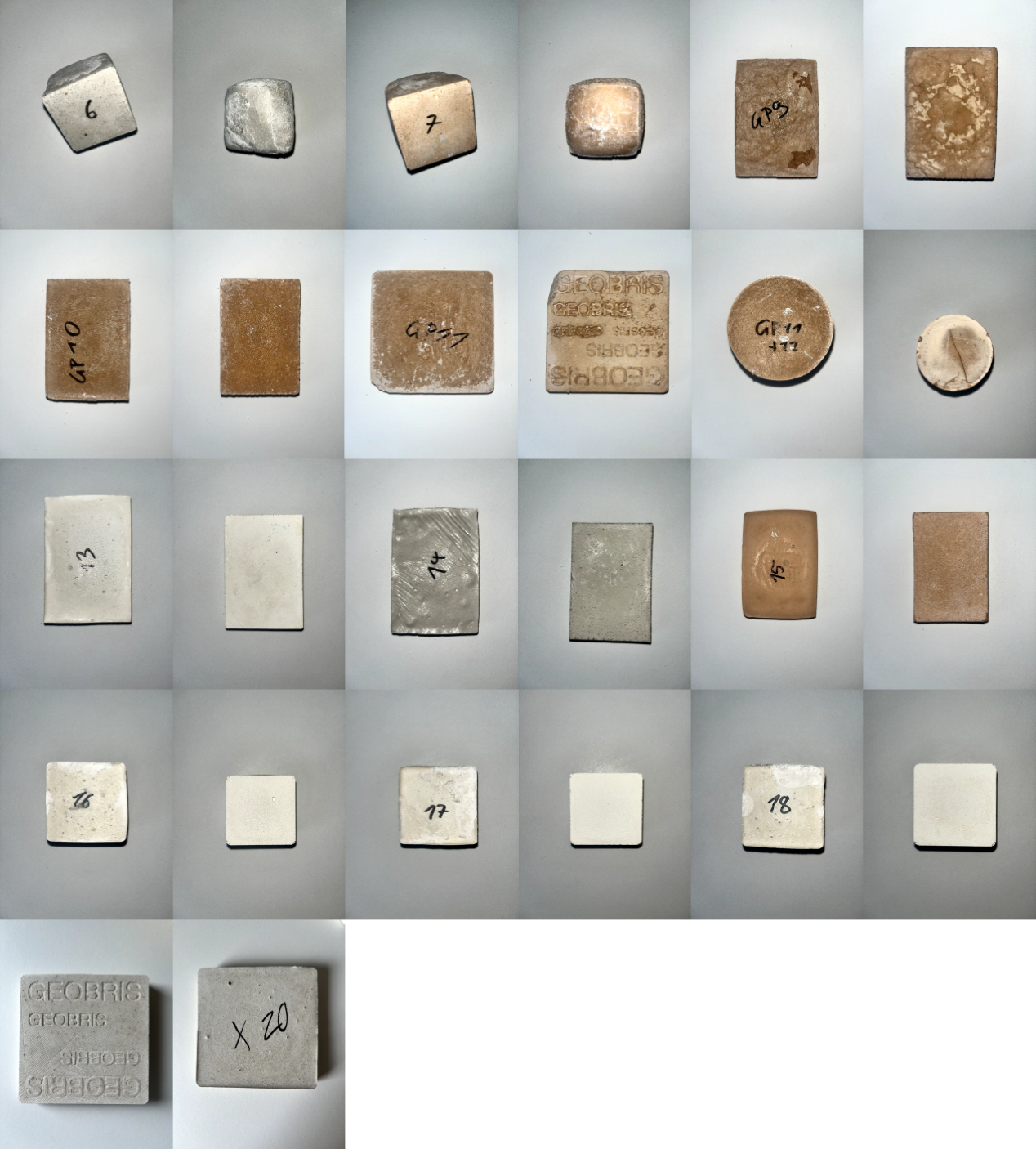
Yana Zschiedrich builds upon the initial attempts of the Fraunhofer IBP and refines them into a successful formulation. Through numerous experiments, the mixture GEOBRIS eventually emerges.
Hyb.Mat.2022.01
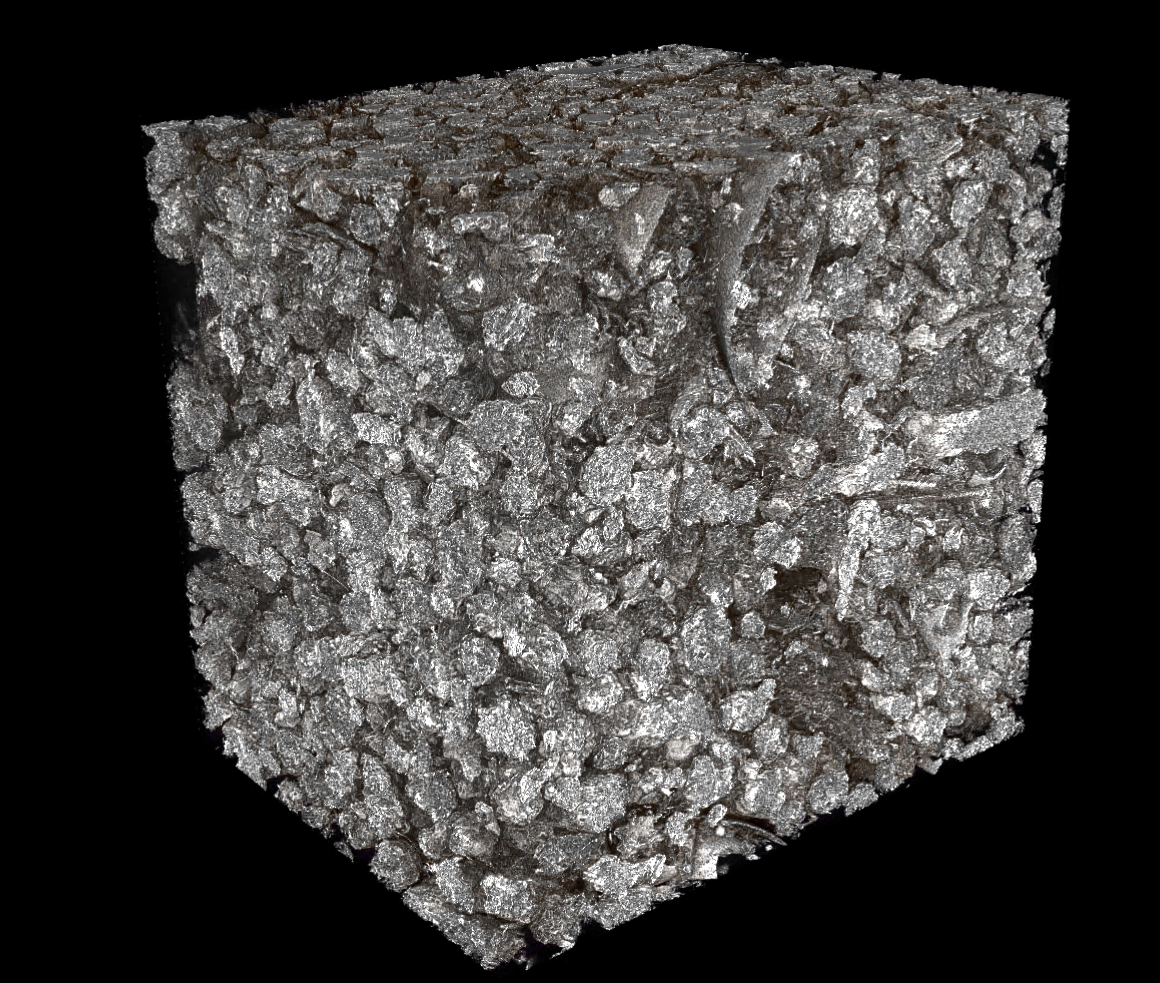
Analysis
X-ray of a prototype made from a mixture of mealworm feces and EPS dust
Problem statement: Styrodur is the common brand name for extruded polystyrene (XPS), which is used as rigid foam board or exterior insulation for basement walls. Expanded polystyrene, known by the brand name Styrofoam, is predominantly used in thermal insulation composite systems (TICS). In Germany alone, 300,000 tons of Styrofoam are produced annually.
Pure polystyrene is chemically recyclable in its raw form. Molded parts and fillers from packaging, such as those found in electronic devices, meet the material purity requirements. However, Styrofoam insulation is treated with brominated flame retardants, posing significant challenges during recycling. Only selected waste incineration plants with special permits are allowed to burn polystyrene with flame retardants. Styrodur is completely destroyed by this thermal treatment, with each carbon atom contained in the insulation being converted into a CO₂ molecule. Consequently, this treatment is associated with a high CO₂ emission, rendering the material unusable thereafter. In the context of HYBRIS, Styrofoam is recycled by reintroducing it into the building material cycle in a different form.
Scientific Objective
In 2015, the idea to biologically treat polystyrene and feed it to mealworms emerged in the USA, but it was never implemented on a large scale. The question of what to do with the resulting mealworm excretions remained unanswered. This project aims to address precisely this question. Mealworms convert bromine-containing Styrodur insulation into a harmless product suitable for applications in the construction industry and art, such as sculptural materials. This could redirect a portion of the tons of Styrofoam waste generated annually, which is currently only thermally disposed of, towards meaningful recycling opportunities. The transformation of Styrodur by mealworms is feasible even at room temperature, with optimal conditions at 20°C and 50% humidity, resulting in less CO2 emissions compared to Styrodur incineration, as some carbon is bound into biomass. The primary goals are twofold: firstly, to find a biological solution for processing Styrodur insulation, aiming to utilize mealworm excretions, pelletized after digestion by bacteria in the mealworms' digestive tracts, as granular aggregate for lightweight concrete, creating a novel recycled building material. Secondly, to investigate whether the mealworm excretions, in dust-like form, can serve as a filler in a cement-free binder, specifically a geopolymer.
Artistic Objective
By combining different binders with mealworm excrement, innovative materials are created, suitable for use as building materials or lightweight aggregates. These materials enable the creation of sculptures through various manufacturing processes.
Role of Fraunhofer IBP
Dr. Volker Thome leads the "Mineral Materials and Building Material Recycling" department at IBP and has over 20 years of experience in material development. For HYBRIS, his department provides laboratory and measurement times for the required equipment such as micro-computer tomography, X-ray analysis, mechanical testing, and mixers with pelletizing dishes.
Transformation Potential
When polystyrene insulation is thermally treated in waste incineration plants, large amounts of CO2 are emitted. Bromine-containing flame retardants are released into the air and enter the environment. Glued insulation panels cannot be incinerated and must be disposed of in landfills. However, the half-life of polystyrenes is approximately 5000 years. By using mealworm excretions, previously consuming and processing the insulation material, a building material with higher compressive strength than Styrodur is created. Thus, the project aims not only to environmentally dispose of problematic insulation waste but also to reintroduce the material into the construction material cycle. The mealworm excrement is used as lightweight aggregate or filler to fill gaps between the aggregate grains and as an additive for binders to positively influence their flow properties.
Economic Viability
The processing of two waste products with low energy consumption is a highly economical way to generate recycled building materials and simultaneously manage the accumulated construction debris from polystyrene-containing thermal insulation composite systems. This approach conserves the environment and resources by saving significant amounts of CO2, utilizing waste instead of landfilling it, and conserving primary raw materials.
Milestones
Planned Implementation
Before suitable binders can be found for the excrement mixture, the composition of the mealworm excretions must be analyzed. These excretions are chemically and mineralogically examined in the laboratory of the institute. The analyses provide insights into which binders might be suitable for the project. With a larger quantity of mealworm excretions produced in the studio, initial mixing experiments with various binders, including cement-free binders such as geopolymers, are conducted. Excretions are pelletized through suitable pelletization after these initial mixing experiments. Both products are then examined for their mechanical properties at the IBP. After the analyses, the first experiments follow. Suitable mixtures are shaped, while different mixing processes are tested.


Hyb.Mat.2020.01
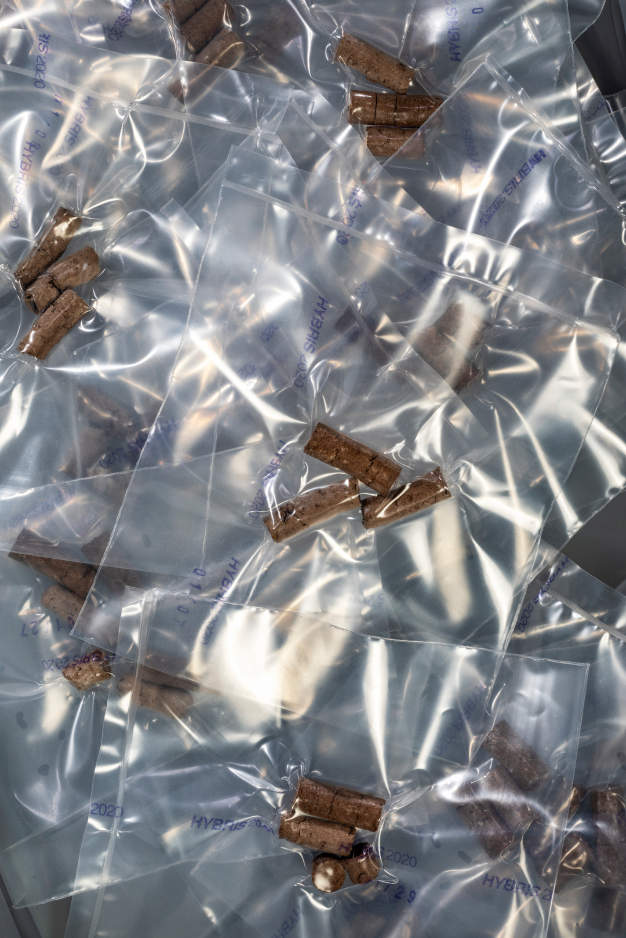
Hyb.Mat.2020.01
Vacuum-sealed pellets effectively contain EPS-dust-infused mealworm excrement and prevent its dispersion into the environment.
Pellets of excrement are the byproduct of a sculptural series created by mealworms. During the sculpting process, the mealworms consume EPS insulation panels and excrete them afterward. The excretions mix with the abrasion produced during the feeding process. Initially, the dust is bound with any suitable binder and formed into pellets. This led to the idea of utilizing the feces-dust mixture, which accumulates in large quantities, as a resource and reintroducing it into the construction material cycle.

Text

Hyb.Txt.2023.01
A large image:
the mass, the swarm,
the facility, and the
creator.
The installation HYBRIS by Yana Zschiedrich.
Text: Joachim Blank, born in 1963 in Aachen, lives as a visual artist in Berlin. Since 2003, he has been teaching as a professor of media art at the HGB Leipzig.
Sculpture in its purest form always starts from the whole, subtracts, and reduces. The mealworms in the HYBRIS installation also work subtractively. Yana Zschiedrich works additively: she combines apparatuses, various materials with mealworms into an installation - I call it a system. In this setting, both the mealworms and the artist create different images that come together to form something larger.
Abstractly speaking, I understand an image as something through which we can identify (recognize) something. What we believe to recognize doesn't necessarily have to be depicted in the image. Generally, recognizing something in images that is not depicted and identifying the absent as meaning is a characteristic of human cognition. We owe to the visual arts the ability to provide such experiences to perceiving humans. The outstanding importance of images as a cultural technique lies in the fact that within the image, another image can also be contained, which can be interpreted by us. In this specific form, it is a deeply human imagination to link real and fictional truths in a way that we can share with other humans, but hardly with other living beings. Apparently, there are at least as many realities as there are species.
How do mealworms experience their reality as larvae of the mealworm beetle? Mealworms are worms that apparently like to inhabit flour, so they are also found in pasta, cookies, and other baked goods. They are also considered a healthy source of protein and are increasingly becoming a human food, being approved as food insects in the EU. The fact that mealworms also like Styrodur has only recently been scientifically researched. Like all other living beings, they transform something existing into something else: they also have metabolism and reproduce. In HYBRIS, they eat something "bad" and excrete something "good": non-biodegradable Styrodur (flame-retardant polystyrene) is transformed by them into flawless, biodegradable excrement. Did the metabolists of the Japanese architectural avant-garde already have this in mind in the late 1950s when they used the term „shinchintaisha“ as a symbol for the essential exchange of material and energy between organism and environment? Are we now seeing architectures with facades made of mealworm excrement following the architectural utopias of floating houses and capsule skyscrapers on an urban scale?
The use of excrements and their artistic added value had already been demonstrated by Piero Manzoni in 1961 with "Merda d'artista," in which he chose the shortest path and preserved, numbered, and sold his own excrements as artist's shit in ninety cans. Initially, he sold thirty grams of excrement for thirty grams of gold. The price has increased since then. Excrement can become high-quality art and not just fertilizer.
But can the production of excrement as well as the excrement itself in the same context also be art and then solve a global, glaring environmental problem in the face of the advanced climate crisis? This is precisely where HYBRIS by Yana Zschiedrich comes in.
But first... the excretions - the feces - they contain no more toxins and are biologically fully degradable. So, is the compost healthier than what produced it? Can inorganic material become organic at all? Does it work with microplastics too? Yes, there are also indications that unicellular bacteria apparently metabolize artificial substances more easily than natural organic substances, such as dead plant material.1
In Yana Zschiedrich's installation and artistic research project, swarms of mealworms are kept in a specially optimized breeding facility, in a closed world. Here, feeding serves solely for digestion and excretion. With the precision of a machine, the swarm of mealworms fulfills this task. And in doing so, Styrofoam reliefs are produced, whose forms are predetermined by the artist and reminiscent of Greek marble slabs. So far so good - the mass follows eagerly, but not unconditionally. The production only works as long as the living conditions are optimal. If they are not, variations arise that have their own formal charm. We call these "Happy Accidents", but in case of major errors such as a continuous drop in room temperature - the mass stagnates. It becomes sluggish and stops production! The artist is challenged to do justice to each individual mealworm, as well as to the swarm as a whole. The power dynamics shift according to the characteristics of "crowd" described by Elias Canetti in "Crowds and Power".2
Maintaining optimal conditions meticulously means working against artistic failure for Yana Zschiedrich. The functional units of the system always mix with the conditions and actions of the mealworms and the artist, serving as a kind of testimony to the overall balance. The overall system is never clear-cut, never constant, remaining fragile because changing parameters always fluctuate it between tipping points. The mealworms in HYBRIS react highly sensitively to their living conditions, and accordingly, the images they carve out are also open-ended. The facility is the world of the mealworms. Artists also react like seismographs to changes in their world.
Yana Zschiedrich's mealworms certainly do not understand the significance of the predetermined paths they carve out of the Styrofoam. This is because they have different sensory fields3
than we humans - they cannot interpret our images. However, this does not necessarily mean that they do not feel anything; rather, they likely experience something within their own sensory field. We do not know this and understand nothing of it. For the mealworms, this is probably also irrelevant. They do not know what they are doing for us, but they apparently do it willingly for themselves, based on their evolutionarily programmed self-preservation instinct. But can't we find parallels to art-making precisely here, whenever we attribute intrinsic motivation to artists in their creative process? Art-making as a practice that does not need to be justified, but is simply carried out because there is a desire to do so from internal drive?
All elements of the installation, such as buckets, machinery, steam, coloration, and lighting, the selection of image templates, which are inscribed into the Styrofoam plates, the numerous material transformations, the "coexistence" and "interaction" between mealworms, meanings, and the artist's intentions - all of this leads to the nesting of various perspectives on HYBRIS and can be read as a polyphonic composition - as a manifold image.
Yana Zschiedrich introduces extended methods of participation with her urgent demand for a nature-oriented material world on one hand and her artistic-aesthetic practice on the other. As an applied researcher, she experiments with quasi-scientific methods, but as an artist and architect, she cannot remain objective. Like the mealworms, she is one of many shaping subjects. She is not an external creator. She is not a third-order observer - she is not a mealworm, but somehow still in the midst of it all - a part of the swarm, the mass, and the installation.
With HYBRIS, the relevance of visual art and its methods in a research-oriented and science-adjacent environment is questioned, albeit subtly and persistently. In addition to the deep desire to solve an environmental problem, this project involves an aesthetic practice to which almost everything is subordinate: design, selection, placement, and communication of the apparatuses. In contrast, the mass of organic worms is not exclusively subject to functional aspects in their selection. Yana Zschiedrich composes the entire appearance of the installation as a picture in every new version - functional necessities mix with deliberate aesthetic choices, which in turn exert subtle influence in the functional overall system. The installation itself and the perspectives of the meta-level of the overall project lead to a "more" than just "being-in-the-world": to a commitment to "being-involved-in-the-world." A specific mixture of knowledge production occurs here. It may certainly have scientific relevance, but it remains part of an artistic work.
The blending of functional, aesthetic, scientific, and quasi-scientific elements into a meta-level formulates the larger picture of HYBRIS as a complex project, where there is always something new to discover, much like in a good picture. And even if the experimental setup of HYBRIS were to succeed and no more toxic styrofoam needed to be produced, what would the mealworms then eat to produce their healthy excrements?
Nature is indeed the creator of all things, but the soul is considered the creator of all expression. The thing and the expression are always somehow interconnected. And here we are again at the big picture: HYBRIS.
-
2Elias Canetti: Crowds and Power. Carl Hanser Verlag, 1960. 1. The crowd always wants to grow. 2. Equality reigns within the crowd. 3. The crowd loves density. 4. The crowd needs direction.
-
3Markus Gabriel: Why the World Does not Exist; Ullstein Verlag, 2013.
Objekt

Hyb.Obj.2024.01-02
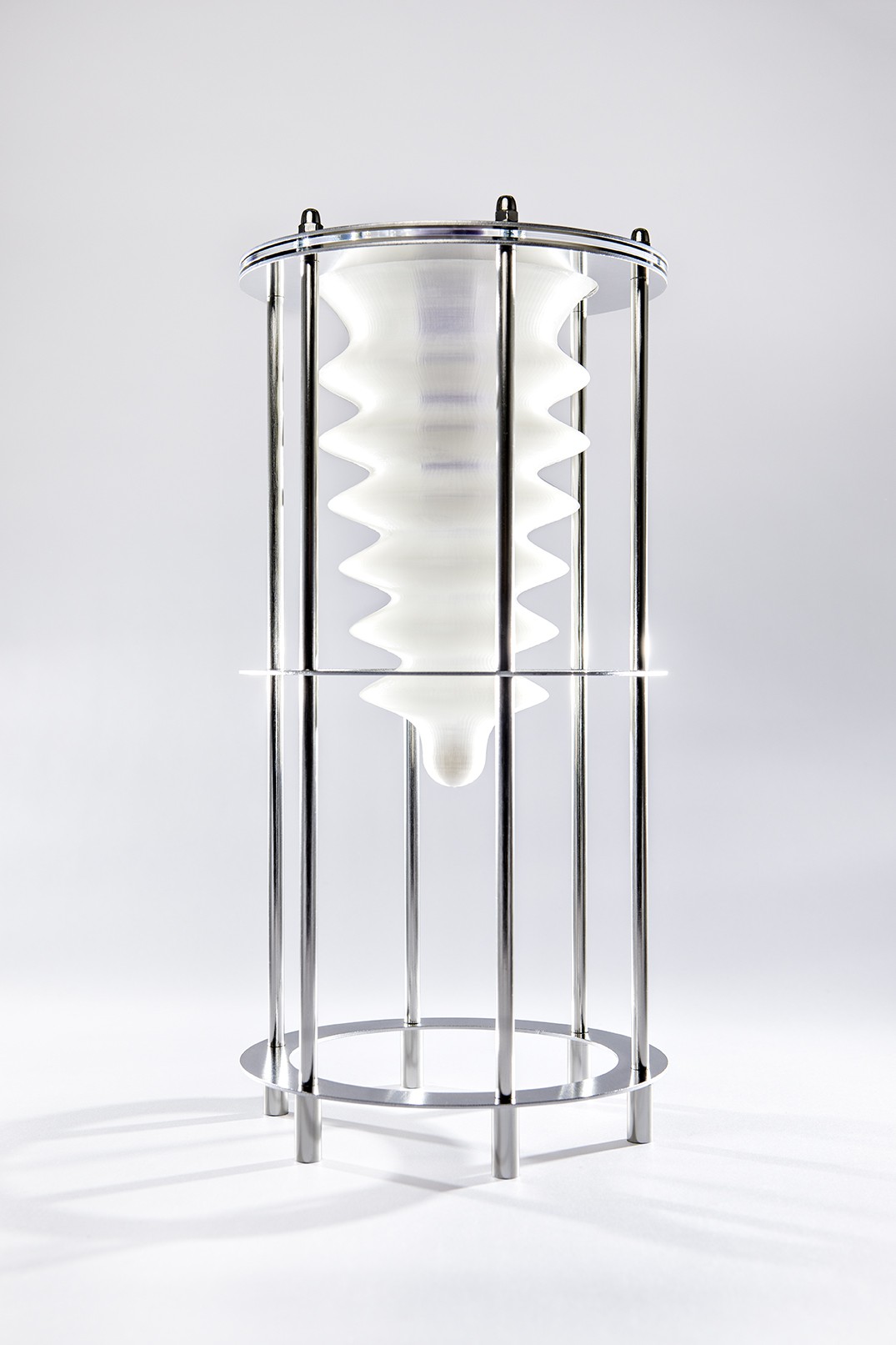
Hyb.Obj.2024.01
The Worm as Machine! In the age of waste disposal, organisms are increasingly used as innovative solutions. Materials: Aluminum sheet, acrylic glass, PLA, Styrofoam, mealworm frass. Dimensions: 42 x 20 cm.
Two objects for the „Denkraum Natur“ as part of the theme year 2024 „Schätze der Zukunft“ (Treasures of the Future) by Futurium: Objects Hyb.Obj.2024.01-02 collectively illustrate the transformation process of EPS insulation materials into the sustainable building material GEOBRIS. Through the use of mealworms as transformative tools, the material is converted inside the larvae and prepared for use in GEOBRIS.
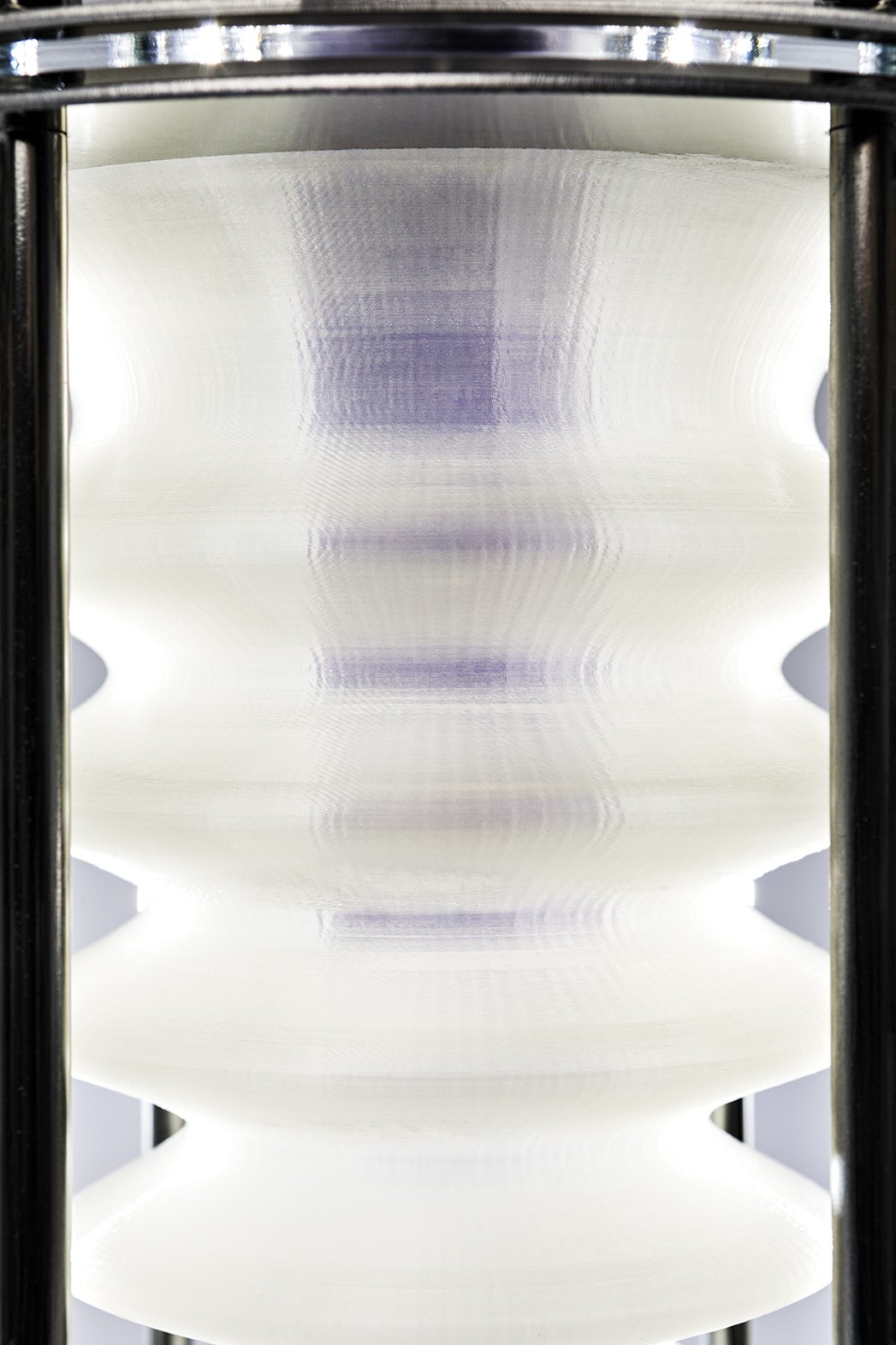
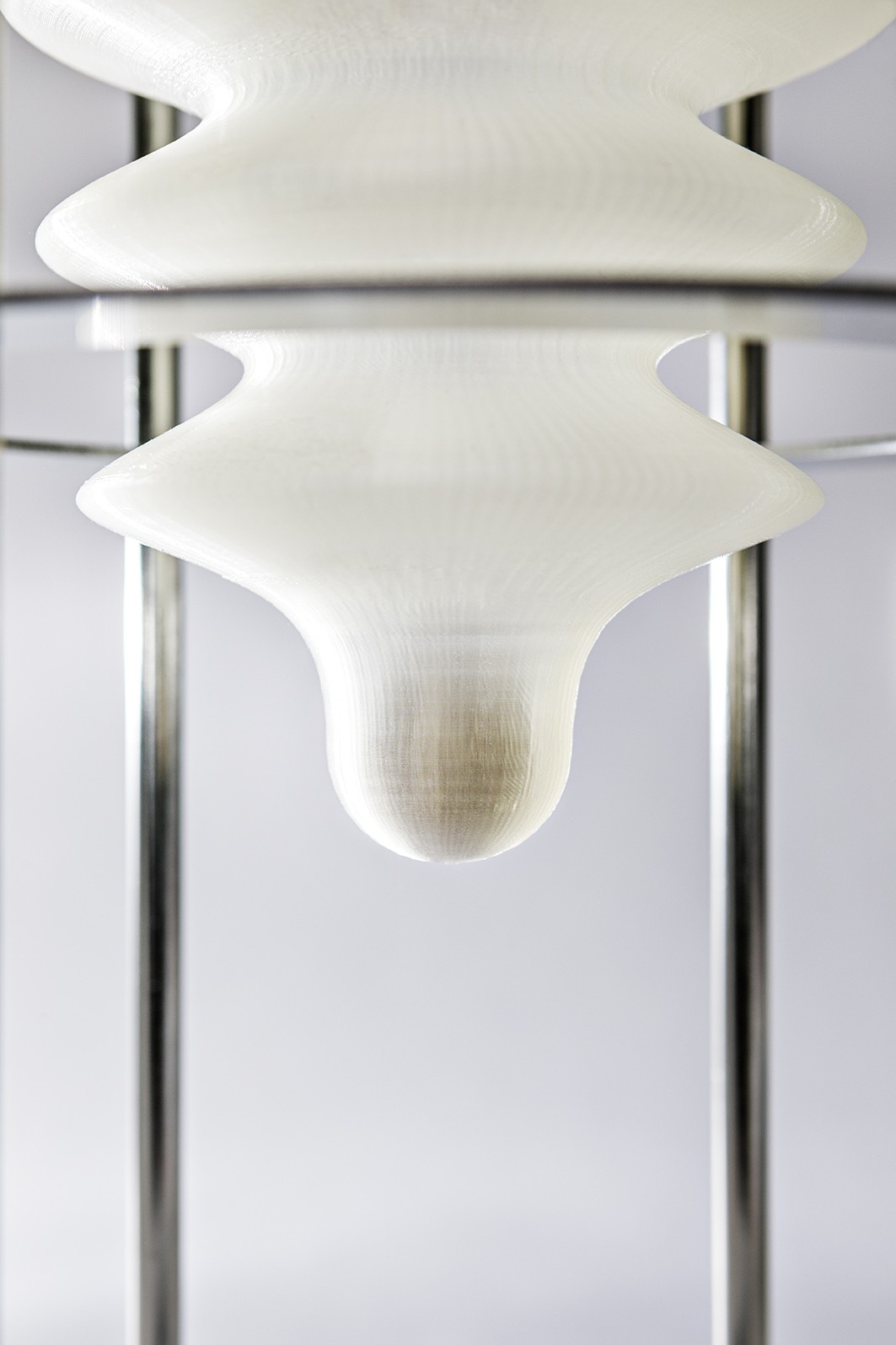

A tactile object made of GEOBRIS for Futurium. Material: Ash from mealworm excrement bound with geopolymer-based binder, Dimensions: approx. 14 x 14 cm.
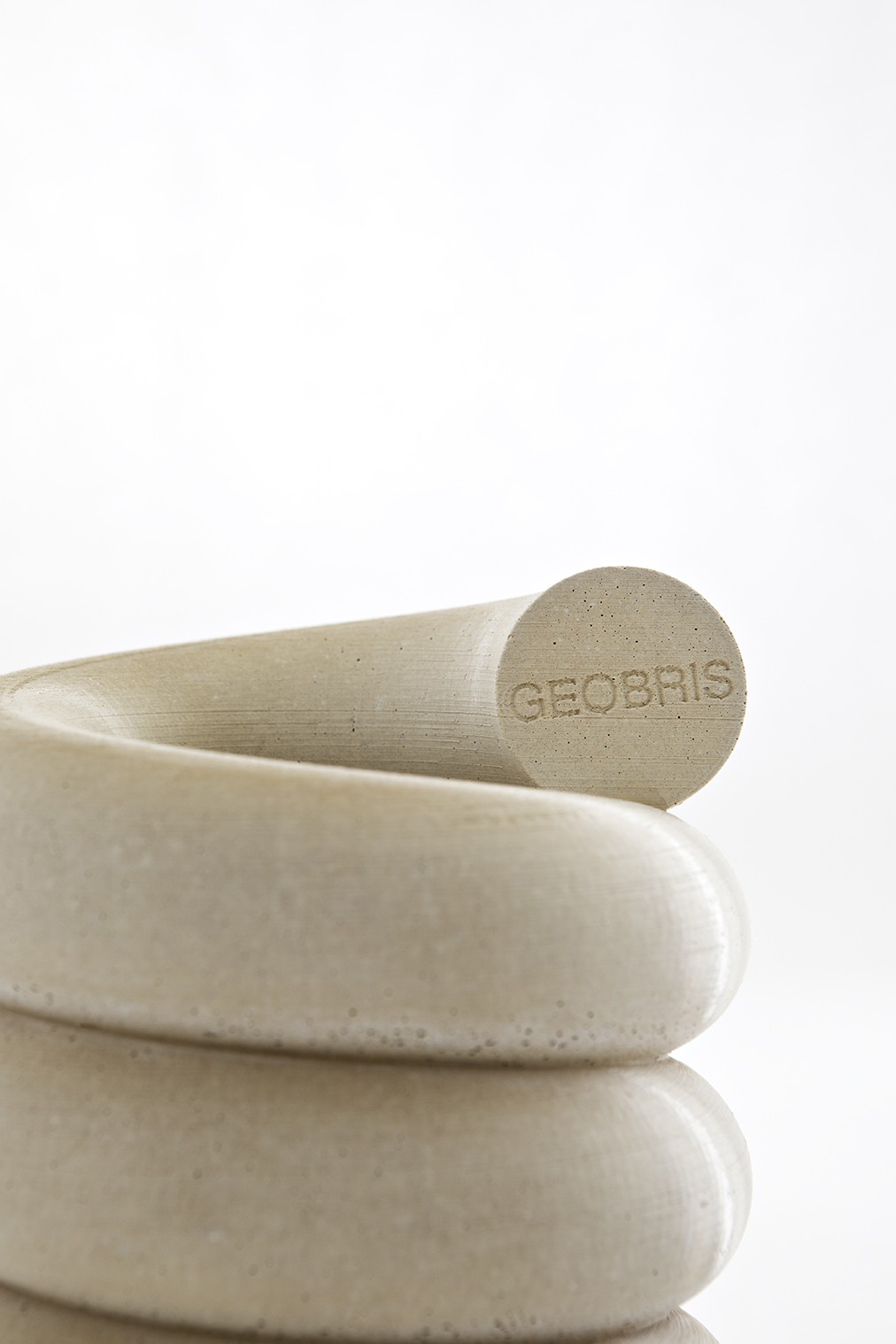

Video

Hyb.Doku.2024.01
The documentary highlights the central themes of the Hybris research initiative. Accompanied by a song from the perspective of a mealworm, it focuses on the transformative power of these creatures.

